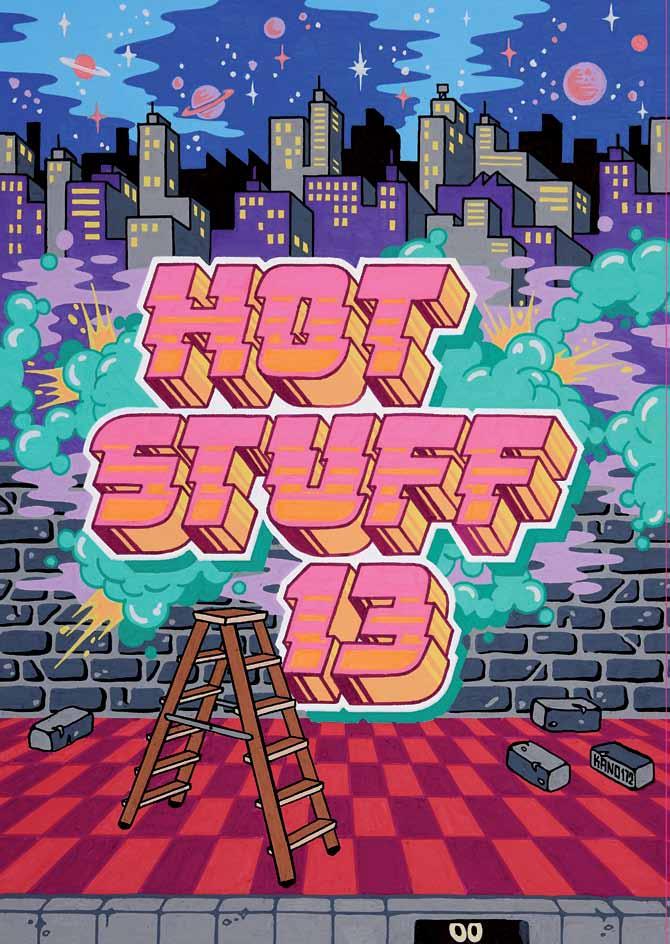

EDITOR’S INTRODUCTION
Welcome to edition 13 of the Hot Stuff magazine!
In this issue you will find some great contributions by Skeme Richards (The Nostalgia King), Koe Rodriguez, Pat Vogt, Swifft Edits, Spankie Hazard, Wildstyle Guy, Oliver Way, , Wild Life Archive, Facts on Wax, Patrick Thevenin and myself.
The Cover is made by K ANO AKA REAKT and Koe Rodriguez did a nice interview with Michael Holman celebrating 40 years of the Graffiti Rock show.
For those who don’t know me yet, I have already collected many disco-related items, such as magazines, books, acetates and, of course, records! Like me, there are many other music lovers who have interesting stories to tell, know about the music’s history and have certain memorabilia.
This magazine includes a wide range of interesting articles on disco, jazz, rap, hip-hop, funk, house, rollerdisco and the graffiti & breakdancing culture. Furthermore, you will find vintage advertisements and magazine articles mainly from the 1970’s to the 1990’s.
Enjoy!
Groetjes, Discopatrick
3
HOT STUFF
dE
Editor Discopatrick
Contributing Writ E rs
Discopatrick Kano
Another Taste
Discopatrick
Dutch Graffiti Library
Koe Rodriguez
Marcus Patty
Marcel Vogel
Niels Hoeke
Oliver Way
Patrick Thevenin
Patrick Vogt
Skeme Richards
Swifft Edits
Spankie Hazard
Wildstyle Guy
Wild Life Archive
sign
E r iLL ustration
- Layout Cov
© Discopatrick 2024
CONTENTS 3 EDITOR’S INTRODUCTION GRAFFITI ROCK 40 by Koe Rodriguez 6 26 SOPHIE bRAMLy INTERVIEW by Patrick Thevenin ALE x ANDER RO bOTNIK by Oliver Way 30 40 ANOTHER TASTE by Discopatrick D IGGING JAPAN WITH G IANLUCA bECCARISI by S keme Richards (T he N ostalgia K ing) 46 52 E AST VILLAGE EyE, I T’S ALL TRUE by Pat Vogt TALKIN DIRT y by S pankie H azard And Swifft Edits (Sedgwick Records) 70 78 VINTAGE MEXICAN HI-ENERGY/DISCO SOUND SYSTEM POSTERS Collection Of Wild Life Archive ROTTERDAM 1986 THE ROOF IS ON FIRE by d utch G rafitti l ibrary 90 94 THE DUSTY DOZEN by Guillaume AKA W ildstyle Guy STA x COVER ART 106 112 MIZELL BROTHERS’ BRILLIANCE By Niels Hoeke And Marcus Patty Brought to you by Facts On Wax HOT MOLTON LAVA by Marcel Vogel 116 118 VINTAGE ARTICLE - LEROy H UTSON by Peter Lewis K ANO AKA REAKT COVER ART 122
GRAFFITI ROCK 40 KOE RODRIGUEZ
James “Koe” Rodriguez is a recognized visual artist, Hip-Hop scholar and an entrepreneur. His work has appeared in published books, domestic and international magazines, documentary films, group photo exhibitions and on lifestyle apparel. Over the years he has interviewed and captured such notables as: The Cold Crush b rothers, Rakim, LL Cool J; Jay-Z, KRS, Wu-Tang Clan; Kenny Dope, the TATS CRU and Sal Abbatiello of the Disco Fever.
In 2005, Rodriguez curated his first group photo exhibition in b rooklyn, New york entitled ‘3 The Hard Way.’ The exhibition featured the works of renowned New york photographers, Joe Conzo, Ernie Paniccioli and Jamel Shabazz, and represented the first time all three photographers exhibited their timeless works under one roof. That year, Rodriguez would go on to pen a powerful afterword in Shabazz’s acclaimed book ‘A Time before Crack’ before heading to Paris, France to helppromote the seminal sneaker documen -
tary, ‘Just For Kicks,’ in which he co-starred.
Rodriguez is the Owner / Founder of Koe Rodriguez LLC, a sole proprietorship specializing in creative representation and media licensing. The company represents a number of renowned clients, such as: Martha Cooper, Ernie Paniccioli, Joe Conzo; Jamel Shabazz, Henry Chalfant and Thirstin Howl the 3rd. In conjunction with his clients, Rodriguez has worked on a number of international lifestyle projects with Adidas, Montana Cans, Sony; Nike, TriStar Pictures, Puma; ESPN+, beyond The Streets and the Rock & Roll Hall of Fame, to name a few. He is the owner / founder of the curatorial apparel and art brand ATW (www.atwcrew.com).
The following pages feature an interview Koe did with Michael Holman celebrating 40 years of the Graffiti Rock show.

6

7
Photo by Martha Cooper
“Graffiti Rock was an incredible show... Michael Holman was a genius.”
-Debi Mazar
When we speak of Hip-Hop pioneers, the name Michael Holman may not immediately come to mind. Holman wasn’t a legendary graffiti writer, b -boy, MC or DJ. And up until the late 70s, he wasn’t even a New yorker. Michael Holman was, however, a visionary; someone who had the foresight, passion, talent, creativity, intelligence, and balls to make shit happen. And in the b ig Apple, sometimes balls are all you need to make a name for yourself. The multidisciplinary artist, writer, filmmaker, musician, and impresario went from Wall Street in the late 70s to beat Street in the mid-80s. He went from organizing modest jams in lower Manhattan to organizing televised performances for U.S. Presidents and b ritish royalty. While showcasing the talents of the emerging HipHop culture for a downtown New york audience in the spring of ‘79, Holman met a teenaged Jean-Michel basquiat, who revealed himself as the elusive SAMO. Soon thereafter, the two formed the experimental noise band Gray.
Through strategic collaborations, hard work, and perhaps a bit of luck, Holman positioned himself to become a creative and commercial force in Hip-Hop culture during the 1980s. To say that Michael Holman touched many facets of New york’s music and art scene during one of its most memorable (and turbulent) decades would be an understatement. His vision, hustle and talents have firmly cemented his name in the pantheon of HipHop greats. Arguably, the crown jewel of his storied career is a short-lived television show called Graffiti Rock. Talk about onehit wonders! 2024 marks Graffiti Rock’s 40th anniversary and I thought it only right to reach out to my man “Money Mike” to rap about it. I wanted to know how a TV pilot captured the hearts and minds of a generation of Hip-Hoppers and set the stage for future Hip-Hop programming for years to come. My man Mike came correct and blessed me with the b ig 40 ballistics. Enjoy!
KOE: Peace, Mike. Thanks for making time to build with your man. Last year Hip-Hop culture turned 50. Did you ever imagine we’d make it this far?
MICHAEL: Peace, Koe. Thanks for the opportunity to share my thoughts and me -
mories regarding Hip-Hop and my role in it. Everyone I know who was around back in the day–the late seventies and early eighties–they all, we all, say the same thing: if you truly believed that Hip-Hop was going to last for another fifty years, into the 21st Century the way it has, as the dominate, popular culture worldwide, and looking like it will enjoy that same status for another twenty years, you were the only one who did. None of us–who were just kids and very young adults at the time of Hip-Hop’s true beginnings–had any idea that it would become such an influential, global phenomenon. Those early pioneers who were making it all happen back then–artists like The Treacherous Three, Spoonie G, M.C. Sha-Roc, DJ Afrika bambaataa, DJ Jazzy Jay, Grand Master Flash, Grand Wizard Theodore, Kool Herc, Grand Mixer Dx T, MC Ikey Cee, Phase 2, Crazy Legs & The Rock Steady Crew, The New york City b reakers and The Cold Crush b rothers, just to name a few, and filmmakers, photographers impresarios and journalists like Martha Cooper, Henry Chalfant, Fab 5 Freddy, Charlie Ahearn, myself, Joe Conzo and Steven Hager, also just to name a few–none of us could have seen this insane, phenomenal explosion of our culture blanketing and changing the world. And anyone who says differently is stretching the truth.
KOE: Prior to moving to New york in the late 70s, who was Michael Holman and were you aware of the unique creativity bubbling in the streets of New york?
MICHAEL: I was this Northern California kid, who had dropped out of university for a year (1975) and had my mind blown when I joined this San Francisco art rock band called The Tubes and really experienced what it was like to work with other conceptual, genre-defying performance artists who really knew how to push the artistic, conceptual envelope on stage and in music. I was a pre-med major at the University of San Francisco in 1975, and I was also a good, free-style Disco club dancer. People from The Tubes spotted me on the dance floor and hired me to join their band for one performance. I ended up joining The Tubes for a whole year as a dancer, touring the country, performing in what was essentially a psychedelic, Rock and Roll circus. During our tour, we performed at The bottomline in New york City, and experiencing New york in 1975, at the height of Disco, when Pat Cleve -
8
land ruled the fashion runways, MFSb rocked every club’s turntables, street gangs and boomboxes were everywhere, and bethesda Fountain in Central Park was a live party every Sunday afternoon. Trust me, the police looked the other way as street music and culture ruled New york City - to the maximum. And you had to be blind, deaf and dumb not to be rocked by it. It was as live in New york in the early Disco 1970s as it was later, in the early HipHop 1980s but it was just a different flavor. It was all about Afros, bellbottoms, crime and chaos on the streets; the Latin Hustle, The bus Stop, garbage strikes and glamorous nightclubs all at the same time and we LOVED it!!

Any cool kid from somewhere else, who got a taste of New york back then, always, always vowed to return. you didn’t know how you would do it, or how you would afford it, or where you would live or what you would do to make a living, but you never-the-less vowed to return and most of us did! I did! New york was (and I believe still is) like a theme world for cool, thinking, creative, inspired people, looking to make something happen that’s never happened before. Disneyland for dope kids! Everywhere you turned there was something going on you couldn’t believe you were witnessing. Things that were so cool and so fresh and so fun it made you fall to your knees laughing with joy! Especially if you were from somewhere else that didn’t know the time. New yorkers would say and do things you never heard or saw before, things you would never forget for the rest of your life. b rilliant, profound comments and obser-
vations by larger-than-life street characters that would turn your mind inside out. Living, breathing poetry. New york is like a kingdom from another world. A world so bizarre and unreal in its coolness and creativity and fun and danger, that you can never get enough of it. The city is like a drug that’s there’s no treatment for, no antidote to. I got mad turned out by just a couple of days of visiting New york and as soon as I graduated from U.S.F. in 1978, return I did, never wanting to live anywhere else, ever. And in the last 40+ years, I have never changed my mind about New york. THAT I did know back then! I might not have seen the future of Hip-Hop, but I saw my future in New york, and I knew I would never leave. I love New york like no other place in the world. It’s family to me. The whole city.
KOE: What was your first introduction to Hip-Hop? Did you understand it, and when did you decide that you wanted to be down?
MICHAEL: 1978. I’m waiting on the 1 train subway platform on my way to my new Wall Street job, and a train pulls into the station, covered top to bottom, front to back with the most beautiful, colorful aerosol burner and I was destroyed. “Who did this? How did they get permission? What kind of city is this that there are kids who create and vandalize at the same time? What’s going on?” It was almost too much for me to comprehend because I knew what I was looking at was illegal. I knew it was made by kids from the underground of New york, that it wasn’t sanctioned; that it was hard, and dangerous to pull off, yet there it was. I both understood it and didn’t understand it. My mind: inside out! Later, in late 1978, I met Fab 5 Freddy, and he was my guide, my liaison into the culture. He was my first teacher and imagine that!! Freddy and the Fabulous 5, featuring my other close homie and teacher, Lee Quinones, gave me that very first education and exposure. but then, at the party Freddy and I threw (at the loft of b ritish Ex-pat artist and early New york culture appreciator Stan Peskett) for the Fabulous 5 (Lee, Mono, Doc, Slave and Freddy), introducing that earliest element of Hip-Hop culture, aerosol writing, to the fine art, downtown art/New Wave/Punk Rock scene. At that party called The Canal Zone Party, April 29th, 1979, I met Jean-Michel basquiat, and my path was diverted, for a few years, towards conceptual, abstract, absurdist art
9
Michael Holman c. 1983 Photo by a rne swensen
when basquiat and I created the noise, experimental sound band, Gray.
After Gray broke up–when basquiat blew up–I was looking for my voice as a conceptual, surreal filmmaker. I heard about these kids who spun on their heads, so I decided I needed to film THAT! but instead of me capturing these kids dancing, and using that footage to further my filmmaking ambitions, one thing led to another, and before I knew it, breaking, and those kids, and hundreds of other creative b lack and Latino kids from uptown used ME to further THEIR ambitions, their vision, and that vision would turn out to be Hip-Hop culture. I only wanted to wet my creative beak by filming these early, 2nd generation breakers, but in the end, I got sucked into Hip-Hop and was overpowered by its genius and soon recognized that I was here to serve the culture, not the
other way around. It became a life-long mission for me, much like other artists and visionaries who thought they could just take one bite of the Hip-Hop apple and then put it down. No way, Jose! you’re in it for life now! Like the rest of the world, I was seduced by Hip Hop’s genius and brilliance and power and meaning. I instantly saw what it could do, how it could influence culture. How it would change culture. How new and unique and vital it was, and I had to be a part of it. I had no choice!
KOE: 1984 was such a seminal year in Hip-Hop culture. beat Street and b reakin’ were released in theatres; Style Wars debuted on Pb S Ch. 13; the New york City b reakers performed for Ronald Reagan during the Kennedy Center Honors on Cb S and your show Graffiti Rock premiered on WPIx channel 11 in New york. Did

10
Michael Holman & t he new york City b reakers with andy Warhol

11
1984 Hip-Hop publication featuring the n ew york City b reakers by Michael Holman.
you feel that Hip-Hop culture had finally arrived and were you excited for its prospects?
“I got sucked into Hip-Hop and was overpowered by its genius and soon recognized that I was here to serve the culture, not the other way around.”
-Michael Holman
MICHAEL: 1984 was truly a turning point. yes, it did feel like, “OK, this culture is here to stay, and grow, and grow…” and I was at the epicenter of it all. but I don’t remember feeling special, or any egodriven impulses or desires, it was more like Hip-Hop was exploding, and it was time to hold on for dear life. Even before I created Graffiti Rock, I knew there would be a place for Hip-Hop culture on TV, in a comprehensive way, where you could see all the styles and elements of Hip-Hop in all their glory, and the world would love it, would consume it, and revel in it and want more, and Hip-Hop would have the depth to supply more. Hip-Hop was that deep with possibilities and ideas and talent. At first there were hints of the culture being captured in the press, in newspapers, then short stories started popping up on TV, then full articles about the culture started appearing in the papers, then foreign TV stated to take no -
tice, then books were being written, then even more comprehensive pieces on TV, but the big prizes hadn’t happened yet: a full blown Hip-Hop TV show, and a full blown Hip-Hop film. but they were soon to come. Then finally Hollywood started taking notice and soon, the possibilities for beat Street and Graffiti Rock became realities.
KOE: Our good friend Henry Chalfant initially created the name “Graffiti Rock.” I reached out to Henry for the backstory and here’s what he had to say, “My Graffiti Rock was a show I put on in early 1981 at a performance space called Common Ground, on Wooster Street in New york City. It featured the Rock Steady Crew, Fab 5 Freddy, and Rammellzee. The ball busters–a notorious Hispanic gang from uptown New york–busted it up. yes, I take credit for the name, but the show never went anywhere, because of the ball busters. I used “Graffiti Rock” because the show featured my and Martha Cooper’s photos in a slide show. Fab 5 created a Rap for it. I wasn’t in the club scene at all, nor did I want to be a manager. That’s where Michael (Holman) came in and booked them in Club Negril. Michael apologized for using the title. I don’t think he was aware of my version. Michael was a thoughtful and empathetic guy, well

12
Run-DMC performs on Graffiti Rock. Photo by Martha Cooper


13
t he new york City b reakers. Photo by george d ubose. Pat vogt Collection
t he new york City b reakers Puma | beat street promo poster. Pat vogt Collection
suited to shaping this raw b -boy crew on their path to becoming a world-famous crew.”
MICHAEL: Henry Chalfant must be one of, if not, the most important, unsung HipHop pioneer impresarios; a person who did more than anyone else in those early days, to help expose what would one day be called Hip-Hop culture, to downtown New york City; and eventually, the world. Thank you, Henry! Martha Cooper, Fab 5 Freddy, Henry Chalfant, me, Charlie Ahearn, we all played different and vital roles in bringing Hip-Hop culture downtown and to the world. Henry was a known, established documentarian whose focus was still photography and motion film, and he captured so much of Hip-Hop in those mediums. but because of my background in The Tubes, I really understood performance and exhibition in a way no one else on the scene did; it was my strong suit, my forte. I had been a professional dancer with The Tubes–The Tubes’ early director and choreographer was no one less than Kenny Ortega of Dirty Dancing fame–so I knew how to take the raw talent and routines those early breakers already possessed, and mold and shape them into real, professional performers and performances.
I had a lot to do with the early, narrativebased routines you see The New york City b reakers doing on TV in the early 1980s; I would choreograph my crew’s routines, so they were more than just breakers showing off their stuff. because of my time as a dancer under the leadership and choreography of Kenny Ortega, I knew how to take these kids’ simple performances for loose change from tourists in Times Square, to performances that would wow an audience at The Kennedy Center or on The Merv Griffin Show. I still see my influence on breaking routines and full crew choreography today, with some of the world’s best dancers, battling at Red bull competitions, etc. What I believe was my greatest influence was bringing narrative, or “a story” to b - boy routines, a beginning, a middle and an end to a routine; the foundation of entertainment. It’s funny, in the 1990s, I was accused by some in the breaking world of having commercialized breaking and focusing the dance on sport. Now that breaking is going to be in the Paris Olympics, I’m
like: “Cool, I’ll take the accusation.” I think I can say this with total confidence: no other non-breaker has influenced breaking more than I have.
“Graffiti Rock is the Soul Train of Hip-Hop.” -Ricky Powell (photographer)
KOE: Amazing. I know Kenny Ortega also directed Gladys Knight & The Pips’ “Save the Overtime (For Me)” music video which featured the New york City b reakers. It was one of my favorite videos on New york Hot Tracks back in the day. It’s kool to know that you played a role in the making of that iconic video. your version of the name Graffiti Rock appears in the end credits of an extra feature called “b ronx River Throwdown” on your Graffiti Rock DVD. Were you playing with the Graffiti Rock show concept back in 1983, and were you influenced by American bandstand or Soul Train when you crafted the 1984 version?
MICHAEL: Actually, I was mostly influenced by an early 1960s Rock & Roll variety TV show called Hullabaloo. And that was my west coast, California mentality that was speaking through me. To this day, I wish I had seen a 1968 TV show that only aired on the east coast, called Soul! created by Ellis Haizlip. That was an unfortunate happenstance that I didn’t see that show, due to living in San Francisco at the time. I will readily admit that my Californian sensibilities were far below the hip and coolness of the New york-based Soul! show. I’d like to think that if I had grown up in New york, I would have been influenced and inspired by that show and would have made Graffiti Rock more like it, and maybe it would have been strong enough to have made it to a full series, instead of just a pilot show. Graffiti Rock needed the style and cool of Soul! and I honestly dropped the ball in that way. Graffiti Rock did well, got good Nielsen ratings, was the first Hip-Hop TV show in the U.S., and aired in 88 markets across the country. but I wish I had a second chance to improve the show, let it grow, and build, fine tune it, etc. b ut that’s life.
KOE: I thought you made for a great host on Graffiti Rock. you were hip, likeable, and genuinely connected to the culture. Did you plan on hosting the show or was someone else initially considered?
14
MICHAEL: Actually, yes. Initially, I wanted Mr. Magic from WbLS’s Rap Attack, and I even considered using Fab 5 Freddy as Graffiti Rock’s early hosts, but it was so early, and no one believed it was possible to even get a Hip-Hop TV show on the air, so I couldn’t get anyone to even consider being the host, so I had to step in at the last minute. The plan was always to get the show to a series, then replace me with a better host, someone with more on-camera Hip-Hop flavor than I had. It’s ironic of course that Freddy would end up hosting the most successful Hip-Hop TV show ever, yo! MTV Raps, 4 years later. I was the first, but it’s a lesson to any entrepreneur: “Never be the first.” Let someone else be the first, then learn from their mistakes. It’s a classic business strategy. I wish I had learned it, but I’m always too impatient and too impulsive to wait around when I think I have a good idea. I always want to make history, not necessarily the money and the success. One day I’ll learn…
KOE: Who was responsible for selecting talent for the show, including Run-DMC, Shannon and set designer b rim TAT?
MICHAEL: I was the creator and producer of the show, so I made all the creative decisions. but I did ask for and got a lot of Zulu
Nation/bambaataa input, which is why I used DJ Jimmie Jazzy. I knew b rim already and we were friends, and I always knew I wanted to use him to do the sets. Man, I had such plans for future episodes! I was going to have every DJ, b - boy crew, Rapper, and writer I knew and ever worked with on the show, including The Rock Steady Crew, Phase 2, Sha-Roc and Us Girls (Lisa Lee and Debbie Dee), Futura, Herc, Grand Wizard Theodore, Grand Master Flash and the Furious 5, etc., etc., etc. I was going to include every Hip-Hop artist from coast-to-coast, but alas, I never got the chance…
KOE: Actress Debi Mazar and actor/director Vincent Gallo famously appear in Graffiti Rock. They appeared to be genuinely down with Hip-Hop. Was this in fact the case, and were you all friends prior to the show?
MICHAEL: Debi and Vincent were good friends of mine from my downtown art world, Mudd Club days, and were perfect examples of downtown art kids who became enamored with Hip-Hop culture. Debi was dating “Kel139”–a popular Graffiti artist–at the time. Vincent Gallo had married this Puerto Rican girl uptown and was my assistant manager of The New

15
stills from seminal “ save the overtime (For Me)” video featuring the n ew york City b reakers
york City b reakers. There were a lot of downtown kids who embraced Hip-Hop culture completely, like my Gray bandmate, Nick Taylor, who went from experimental guitar to experimental Hip-Hop/ Trip Hop DJing; with the name “DJ High Priest,” which was given to him by JeanMichel basquiat. Hip-Hop really made a huge impact on the downtown scene in 1982 and on, starting when I brought the Zulu Nation Throwdown Review to The Ritz to open for the U.K. new romantic band, bow Wow Wow, then to my spot (with Ruza b lue) at Negril, on 2nd Avenue and 12th Street in downtown Manhattan. From Negril, b lue took my Hip-Hop Review to The Roxy, while I took Hip-Hop to national TV.
KOE: Good stuff. Although Hip-Hop culture was gaining national attention in 1984, it was still somewhat niche and largely misunderstood by the powers that be. What were some of the challenges you and your team faced making Graffiti Rock? How hard were your network pitches and was production ever in jeopardy?
MICHAEL: I was able to raise the funds and build the production team, thanks to legendary music producer and friend, Arthur baker, and his friends and execu -
tives at his label, Street Wise Records, the same boston area label that released New Edition’s first hits. It took a while but the national and international excitement around Hip-Hop in/around 1983–when I was building the Graffiti Rock platform–was great enough that raising the money from a multitude of small investors wasn’t that hard. Then producing the show wasn’t that hard either, relatively speaking. but getting a cool, tough, b ronx or b rooklyn crowd to be the show’s dancers wasn’t so easy because when we went out to The Roxy and other clubs to ask kids to be part of the show, many weren’t interested, mainly because they couldn’t believe a Hip-Hop TV show was really going to happen. It seemed like a pipe dream to most people on the outside. but we persevered. Also, I had so many other obligations: I was a producer, writer and 2nd unit director on the film beat Street, I was writing my book, b reaking and The New york City b reakers and touring with The New york City b reakers for the beat Street promotional tour and producing Graffiti Rock, ALL AT THE SAME TIME!
I said yes to everything, and I wish I hadn’t. Another important lesson I am trying to learn. but the real challenge to getting Graffiti Rock sold as a series (not just a pi -
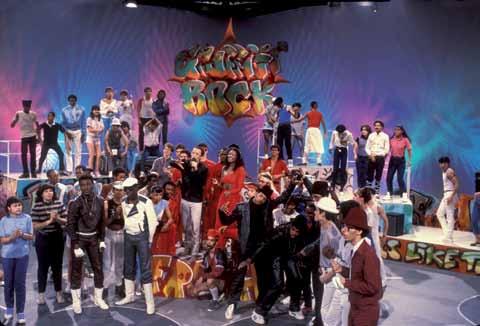
16
Graffiti Rock group photo by Martha Cooper

17
Graffiti Rock segment list. Courtesy of Michael Holman



18
Phase 2 flyers featuring “Money Mike Holman” and the New York City Breakers. Courtesy of Michael Holman

19
lot show, which of course we did succeed at) was convincing the station managers, in various regions across the country, to buy the show for their respective markets. Most of these station managers were middle-aged white men who had no idea what Hip-Hop culture was, or worse, they believed Rap was a passing fad, or they already carried Soul Train and didn’t know the difference, and so they weren’t interested. I’d say the greatest challenge was station managers believing Rap was a passing fad, in 1984!! I do remember a representative from AFTRA, the TV Actors Union, trying to convince my New york City b reakers to hold out for more money during the filming of Graffiti Rock. Man, I had a fit and forced the rep out of the studio and got the show back on track.
KOE: For those who don’t know, a television pilot is an independent episode created to evaluate a series’ potential for success. If the pilot tanks, (i.e., poor Nielsen ratings) the series usually doesn’t get picked up. How did you feel about the final cut of Graffiti Rock and was there any
doubt that the series would get made?
MICHAEL: Well, the pilot was picked up, but not the series, for the reasons I stated above. The pilot got decent Nielsen ratings, and I’m proud of that. I think we even got an Emmy nomination for lighting. We went back to NATPE (National Association of Television Program Executives) twice, to try to sell the series, but we were turned down both times. Again, I was too early. I have “Trendheimer’s Disease.” I’m always too far ahead of my time and suffer for it. It’s OK, I don’t mind. It’s in my blood.
KOE: What was it like to see yourself and Hip-Hop culture on national TV? Were all those involved with Graffiti Rock and Hip-Hop heads that you personally knew happy with the show?
MICHAEL: There was so much going on at the time, and so many expectations and disappointments when the show wasn’t picked up, that I honestly didn’t pay a lot of attention to people’s happiness to -
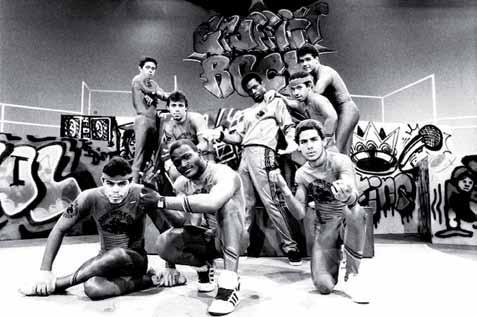
20
The New York City Breakers on Graffiti Rock. Photo by Martha Cooper
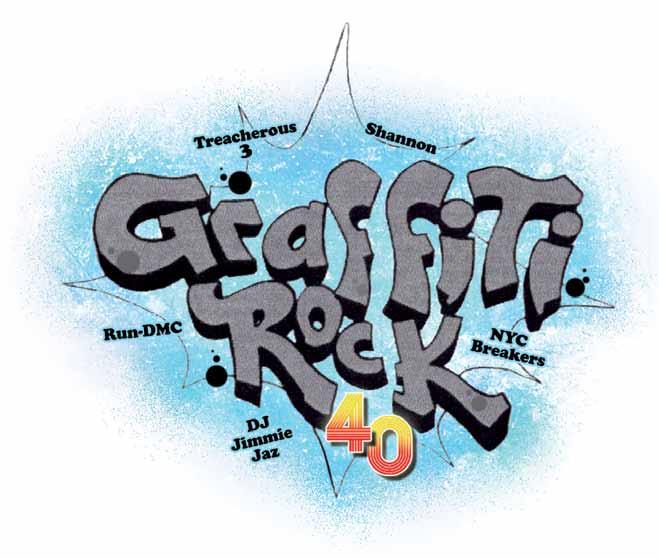
21
Graffiti Rock logo 40th anniversary remix by Koe Rodriguez
wards the show. I just felt that whatever flaws the show had, I would fix it when I sold the series, but when that didn’t happen, so much else didn’t happen; The New york City b reakers’ gigs started to dry up and Hip-Hop culture was changing. It was starting to evolve from the early 1980s look and sound to Hip-Hop’s Golden Era, the 1990s, and a lot of people, including myself, were being left behind and cast aside for a new look and sound in HipHop. The Treacherous Three were being replaced by Run-DMC and then A Tribe Called Quest and The beastie boys. The breakers weren’t getting calls; DJs and aerosol writers were being kicked to the curb; Hip-Hop became Rap in the 1990s, and Rap only.
KOE: I was 14 when Graffiti Rock premiered on Channel 11 in New york and vividly remember how amped myself and others were to see a Hip-Hop show on national TV. I also remember being mad-disappointed that the show never returned. Did you consider reviving the show years later?
MICHAEL: Sure, I did everything in my power to try to revive Graffiti Rock, but like I said, the artists and ideas and styles and sounds of the 1980s became yesterday’s news. It was mad over for us. It would take a long time before there was any new interest in Graffiti Rock. This article I think is a part of that, in a way.
“It’s not easy being an artist. I sometimes wish I was as brilliant at executing my ideas as say a Basquiat, but that level of genius is expensive, not everyone can pull it off, or survive it, and I’m still here.”
-Michael Holman
KOE: Post Graffiti Rock and your role managing the New york City b reakers, you had a very successful career during the late 80s and 90s as a filmmaker, producer, and director. you produced and directed Run-DMC’s Christmas In Hollis and Doug E. Fresh’s All The Way To Heaven music videos and acted as the screenwriter & 2nd unit director on Miramax’s “basquiat,” to name a few. During this time, were you satisfied with your career? Do you feel like you created a lane for shows like yo! MTV Raps?
MICHAEL: I absolutely do believe I created a lane and influence and inspiration for future Hip-Hop TV shows like Fab 5 Freddy’s yo! MTV Raps, if only as a stepping stone, i.e., a means to discover what works, what doesn’t. Evolution is a collaborative process, after all. As far as satisfaction with my career, no, I’ve never been satisfied. I feel I’ve done a few good things, but mostly I am frustrated at lost opportunities or shots taken that didn’t turn out the way I had hoped they would. I try not to look back on it too much, because there’s too much pain and selfanalysis and criticism there, and it’s more than I can handle at times. but the further away from a lot of my work I get, the more I appreciate it and the less time I spend being overly critical. It’s not easy being an artist. I sometimes wish I was as brilliant at executing my ideas as say a basquiat, but that level of genius is expensive, not everyone can pull it off, or survive it, and I’m still here. In the meantime, I keep plugging away, trying to create work I can be proud of and happy with. It’s a journey.
KOE: 40 years later and Graffiti Rock is still a Hip-Hop classic. The show has touched so many people on so many levels, including yours truly. How does that make you feel? And is Graffiti Rock’s relevance in pop culture and Hip-Hop history a consolation for the show’s short-lived success?
MICHAEL: Since making, airing and then failing to create an ongoing series with Graffiti Rock some 40 years ago, I have had myriad emotions and insights about the show, and it hasn’t been an easy ride. I do have so many regrets at what I create, thoughts about what I would have done better/differently in hindsight. yes, a lot of frustration and pain, so your kind words do make me feel good. but there is one memory I have that I will always cherish: I was at a basquiat Retrospective at the Gagosian Gallery in Chelsea, downtown Manhattan, back in 2013. basquiat had been dead for some 25 years by then and Graffiti Rock hadn’t been seen for some 29 years. At the Retrospective, I’m admiring one of basquiat’s paintings, talking to an old Mudd Club friend, when out of nowhere, Q-Tip, from A Tribe Called Quest, walks up and introduces himself and tells me that he, and all the kids in his Queens neighborhood had heard
22

23
The New York City Breakers companion poster to their KTEL Break-Master Vinyl LP. Pat vogt Collection
about the upcoming broadcast of Graffiti Rock, were talking about it at school, at home and on the playgrounds and were so excited, almost unable to wait to see the show. And when Graffiti Rock finally aired, Q-Tip told me that it sent a shock wave through the city; kids were so surprised Hip-Hop culture was on TV! Then QTip absolutely destroyed me when he told me that Graffiti Rock was his inspiration to become a rapper. Then he thanked me and walked away. I don’t need to tell you what that moment meant to me. Recalling it now brings a tear to my eye. What greater reward is there than that? Consolation indeed.
KOE: Wow - what a testament, bro! Thanks for sharing that with us. Prior to Graffiti Rock, you did a few short films like Catch A beat and documented the legendary 1981 b -boy battle at Lincoln Center with the Rock Steady Crew and the Dynamic Rockers. you seemed to always be at the forefront of early Hip-Hop documentation. Was there an inherent need to document the culture for posterity or were you just out there having fun?
MICHAEL: Great question. Hard to answer because my, our motivations at the time weren’t as easy to discern as they would be looking back with 20/20 hindsight. It seems logical that I needed to document the culture, but I was having fun as well. Let me think… I think that I understood at the time that capturing the dance and the music and the rapping, fashion, action, etc., on film, was in its own way, a form of art, a form of an audio-visual sculpture that was not only a work of art, but it was capturing works of art. If I had known how valuable my footage would be for me and the world back then, I would have shot more footage! but that’s not what was on my mind. I was also projecting that footage at clubs back then, as art films, and I was showing
off my own cinematic editing and composition styles, so there’s that as well. I don’t think there’s an honest answer to that question. It’s a mystery lost in time and memories. I knew I needed to make my own Hip-Hop art, and it was with my Super 8 camera that I did it.
KOE: Do you have anything planned for Graffiti Rock 40?
MICHAEL: yes. I’ve joined a partnership with Arthur baker and merchandising pros Tramp and Carlos Maldonado to release ‘beat Street 40’ clothing as well as working with Roger Gastman from beyond the Streets to re-release my 1984 book, “b reaking and the New york City b reakers.”
KOE: 40 years ago, you petitioned the Olympic Committee to consider b reaking as an Olympic sport, to no avail. I’d be remiss not to ask for your thoughts on b reaking becoming an official Olympic sport, debuting this Summer in Paris. It stands to reason that you’re either too early or too late with great ideas. I can’t help but feel that the former was your cross to bear with Graffiti Rock and the Olympics.
MICHAEL: yes, like I wrote earlier, I have Trendheimer’s Disease. When I created The New york City b reakers, from elements of The Floor Masters, and other crews around the city - populating The NyCbs with power breakers - I knew that sports competition was at least one future for the dance, and I tried to make that a reality back in 1984, to no avail. Now that it is an internationally recognized and respected sport–in the Olympics no less–it looks like my vision was once again prescient. It looks like I can see into the future, or maybe I can see that I can influence and change the future. Whoa, that sounds a little spooky! Whatever…
“Back in 1984, the excitement that surrounded the show, as a young kid, was inescapable in New York City. We want Graffiti Rock, NOW!” -Q-Tip
24
KOE: I’ve always considered you an unsung in Hip-Hop; someone who was a vanguard in professionalizing b -boying and creating commercial opportunities for Hip-Hop. you were also responsible for introducing important icons, like Malcolm McLaren, to our culture. I don’t think people realize just how much you’ve done for Hip-Hop because your name is largely associated with just one of your many achievements, Graffiti Rock. How would you like Hip-Hop, and the world for that matter, to remember you?
MICHAEL: That’s a hard one to answer without sounding full of myself. Hmmm. I’d like to someday do a documentary of my own work and let that speak for itself. Let the film tell the world how I’d like to be remembered. but gun to my head, the simplest answer is I’d like to be remembered as a “cultural evolutionist.” A person who, through cultural, intellectual, and creative pursuits, helps shape the world’s future. An Evolutionist. I want to help the world evolve in a constructive way, regardless of how big or small my influence is, and if I can get credit for that, all the better.
KOE: Word. It’s been great building with you, Mike. you’ve always been a gentleman and a scholar. being a devout Hip-Hopper since 1979 and a true fan of Graffiti Rock, this interview has been special. Thank you for your friendship, and for your steadfast service to this thing of ours. Much love and respect, bro!
MICHAEL: Mad thanks to you too, Koe. Let’s get up soon; and I am far from done, on this journey around the sun, as we hurdle/spiral through space at 50,000 mph, on our way to who knows where? Peace, G…
R.I.P. Jam Master Jay, Matthew “Glide Master” Caban, Dino Rock Steady Crew Words © 2024 James “Koe” Rodriguez | Michael Holman

25
new york City b reakers Logo designed by Michael Holman. Pat vogt Collection
SOphIe BRAmly InTe RvIew
by Patrick Thévenin
In the heart of the Bronx, Sophie Bramly photographed the birth of hip-hop.
In an essential book, photographer Sophie Bramly opens her marvellous boxes filled with snapshots of hip-hop scene pioneers.
In the beginning of the eighties, as a young Frenchwoman, Sophie b ramly was working for Paris Match, a.k.a. the French Life Magazine. During a stay in New york, she accidentally discovered the burgeoning hip-hop scene. She decided to photograph her organization - its headquarters, its key figures, and the street universe between rappers, graffiti artists, breakers, and DJs -without really knowing at the time that her photos would be worth gold decades later.
After appearing on the cult show H.I.P.H.O.P presented by Sidney, and then on MTV Europe where she participated in the creation of and hosted yo! MTV RAPSa global rendezvous for hip-hop - she delved into the birth of the internet, then the rise of the feminist revival, and the world of documentary filmmaking. On the occasion of the exhibition “Hip-Hop 360 (Glory to Street Art)” which took place in 2022 at the Philharmonie and where several of her shots are displayed, Sophie b ramly has delved into her archives. There, she found rare photos from her New york period, which she published in “yo! The Early Days of Hip Hop - 1982 - 1984,” a beautiful book featuring the ancestral figures of the movement (Fab Five Freddy, Futura, the beastie boys, Run DMC...), which sheds light on the entire flourishing scene and the impoverished New york of the time. Rare photos of a nascent cultural earthquake: rap, which no one expected to invade the world.
-How did you end up photographing the nascent New york hip-hop scene?
sophie b ramly: Completely by chance! I was at a party in a nightclub somewhere near Union Square and I came across a group of dancers from the New york City b reakers or the Rock Steady Crew, I can’t quite remember, and I was immediately fascinated by their way of dancing. I didn’t understand at all what I was seeing, it seemed completely crazy to me, and yet I had already heard rap because Sugarhill Gang (“Rapper’s Delight”) or Afrika bambaataa (“Planet Rock”) had already released their hits, but they hadn’t really caught my attention yet. In fact, it was the dance that drove me crazy and gradually drew me into this movement.
-Why did you choose to photograph them?
sophie b ramly: It came fairly gradually: first, you need time to get inside the culture, to get to know the people who make it up, to see how it works. I didn’t have much money at the time as digital photography was expensive, but above all, these photos didn’t interest anyone. I arrived in New york in 1981 and stayed until 1984, and what intrigued me the most as a young Frenchwoman was how racist this country was, including the city of New york, while I thought the divide had been settled long ago. There was an incredible distrust around this culture in the ghettos, even from b lack people who were trying to become more bourgeois and criticized this culture.
-When you arrived in New york, was the hip-hop scene already significant?
sophie b ramly: It was very well established because everything had started in the 1970s in a completely non-commercial way. Graffiti artists were brightening up absolutely squalid neighborhoods with their paintings, block parties were just big neighborhood parties where everyone laughed, listened to music, and danced,
26

and rap was just added on top of that. I think for almost twenty years, no one thought they could make money with hiphop. It took little by little for the scene to grow from within and for the movement’s actors to realize they could have a career. When Russell Simmons founded the Def Jam label, he also created a management company and became a promoter. He quickly understood that he needed to manage as many aspects of the business as possible, but also penetrate the white market to develop the success of rap.
-What excited you about the movement?
sophie b ramly: Mostly the energy that emanated from it: it was physical and there was an element of taboo. Let’s remember that there had never really been a black culture in the West, and for 40 years there had been this thread that was continuing to unravel, and with which white culture had always struggled, even if things were improving. What is fascinating is that hip-hop is never the same music, as it only borrows and recycles, using
the advances of technology, constantly renewing itself. Also, it is still predominantly the work of people from disadvantaged neighborhoods and generally a darker skin tone. It has always been looked at as something for thugs. Even if they are millionaires, even if the media and fashion flirt with them within certain limits, there is always a certain distrust towards them, in the sense that they are not attributed the same value as others. It’s very shocking but it’s also what guarantees the survival of hip-hop for a while longer. It’s the expression of racism, obviously, but not only that. It’s also cultural difference, meaning that if you are in rap, you don’t eat the same things, you don’t dress the same way, you don’t have the same vocabulary, you have your own culture which is obviously not the same as everyone else’s.
-Where did the scene gather?
sophie b ramly: In Manhattan, it started at the Pyramid and the Negril, which were two tiny clubs. Then a certain Lady b lue had the idea to rent a roller skating rink
27
D.ST and Boo SKI. Photo by Sophie Bramly
called the Roxy. At first, it was only on Fridays, and since the venue was huge, she had divided it in two with a huge cloth covered in graffiti. but quickly, due to the success and attendance, it opened on Friday and Saturday nights, and there was no longer any need to divide the venue in two.
-Did you imagine at the time that hip-hop would become so mainstream?
sophie b ramly: Not at all. When a culture has been around for a few years and still struggles to get around the corner, you can’t think that one day it will take over the planet. but at the same time, I think that everyone kept going because, intuitively, we knew it would eventually lead to something. We must remember that they were kids at the time, they all lived with their parents, their relationship with money was not at all the same as it is today. And often, instead of being paid with a check, they preferred to be given the same jacket as Michael Jackson by their record label. For them, it was like pocket money! Roxanne Shanté, for example, was 14 when she had her first hit, and what did she do first? She bought herself a Cadillac, even though she didn’t have her driver’s license. It’s so great of her, I love all the craziness of hip-hop, this excess, a bit like people who have just won the jackpot in the lottery.
-Was the way of dressing already important?
sophie b ramly: Oh, right from the start! At first, it was very makeshift because they didn’t have the means, but the looks were so great, like wearing a fox tail and a studded bracelet... They used to steal my jewelry: I found a photo of Fab Five Freddy when he lived with me in Paris, he had borrowed a little mink scarf from my mother and wore it around his neck with a jacket he had bought from a firefighter in Germany.
-So the connections between hip-hop and fashion aren’t recent?
sophie b ramly: Oh, not at all, but especially the look was essential because it was part of the whole hip-hop culture.
Meaning: saving face at all costs, like a method of self-affirmation. Like, you imagine because you wear three fox tails or you’ve done a magnificent graffiti on a dilapidated building, that elevates your social status. This system, whether people like rap or not, has been adopted by everyone. People wouldn’t spend so much time on Instagram telling themselves a wonderful life story without the influence of rap, at least I don’t believe so. And the brands that long vilified rappers because they wore tracksuits or fake Vuitton or Gucci, even going so far as to sue them repeatedly, are now eating out of their hands, incorporating all their fashion codes and using them as brand ambassadors. They have completely revolutionized fashion, and they know it very well, just as they know that fashion comes from the streets and the streets are style.
-How do you see the evolution of hip-hop over the last 40 years?
sophie b ramly: With immense pleasure, but at the same time, from the perspective of women: not only were there very few of them at the time, but they faded into the background compared to men. They were in beige tracksuits buttoned up to the last button, overshadowed by the guys. We saw them at parties but in groups, as nice, well-behaved girls. I photographed very few of them because they interested me little, but over the years, they really reused the misogyny of the 90s to make it an instrument of power, by subverting sexual codes not to be an object but to say: “This is mine, and take that in your face!” Then, many brilliant female rappers arrived like Foxy b rown, Lil’Kim, Nicki Minaj or Cardi b, who each time competed in daring of all kinds. I also found it brilliant that the queer community not only managed to officially step into this culture, but also managed to shift the codes of masculinity in hiphop. Today you have plenty of rappers who seem very masculine on the surface, but whose music and lyrics are very tender in a way, I think of ASAP Rocky for example. I find it very intelligent and powerful to have been able to evolve with the mutations of society, and it has greatly enriched hip-hop. I was saying earlier that if rap is still so strong, it’s because it
28

is still perceived as a culture that needs to be kept at arm’s length, but also has an incredible capacity for regeneration, and the influence of women and the queer community has worked a lot. More and more female rappers have made themselves comfortable in hip-hop, and through the words they use, the way they dress or dance, they have changed the representation of women’s bodies and their sexuality. It’s quite astonishing what they can talk about regarding sex: it’s like watching a pornographic film, and it’s very powerful because if you look elsewhere in pop culture, where do you see women embracing the subject of female sexuality so boldly: nowhere!
sophie b ramly: “yo! t he Early d ays of HipHop 1982 - 1984” (Soul Jazz Books)

29
Futura with his ghetto blaster, on the move. Photo by sophie bramly
Alex Ande R ROBOTnICK
by
OlIvER way - EPm mUSIC
Maurizio Dami is best known under his pseudonym Alexander Robotnick with his international hit released in 1983, ‘Problemes d’ Amour’.
He is often refered to as an Italo-Disco artist, a genre coined by bernhard Mikulski of Z yx Records to help sell their pop records from Italian artists. but we finally set the record straight, Robotnick is not an Italo-Disco artist, which he emphatically confirms when we talk.
He is an Italian, Disco artist, but his sound is unique, electro-chique. Although unlike the classic Electro beats with the long decay of the bass heavy 808 rhythms synonomous with artists like Dynamix II and Egyptian Lover. Robotnick’s Electro doesn’t lean so heavily on bass, but still packs a lot of groove accompanied by ‘new wave’ synth melodies. He also sings in French due to his mothers influence growing up.
born in Florence, Italy in 1950, a decade where Italy was rediscovering itself and rebuilding after the second world war. People were free after twenty long years of dictatorship. Music from across the world was making a big impact.
“Florence was quite different in the 50s, much more beautiful and easy. There were already many tourists back in those days, but the city centre was not over crowded.
It was easy to live in and kids would walk to school οn their own. Later , in the 60s, when my family moved, it got even better. I was free to play around in the courtyards, and in summer I would go to my grandmather’s country house where I had a huge territory to play on with my friend Piero”.
•Was there music in your house growing up ?
both my parents played the piano. My mother had a beautiful voice, she was a French teacher and loved French culture. So I grew up with Edith Piaf, Juliette Greco, Gilbert becaud etc. We would listen to music on the radio, or my mother would sing accompanied by my father with a new piano score he’d just bought from the little music shop.

‘Robotnick 14yo with mother’
•do you remember what triggered you to decide you wanted to get into music
There are two crucial moments in my life as a musician: 1973, I am in Marrakech sitting at a tea shop ; someone is playing Rhaita (Moroccan oboe) accompanied by a bendir player (frame drum), I am mesmerised, and sit there listening to them for hours.
In the following days that music kept playing in my head, there was no theme,
30
just improvisation. I realised I was producing it myself, in my mind.
back in Florence, I bought a very cheap guitar and started strumming on it. The other moment came years later. At that time I used to live in the countryside in a some what hippy style. I would do small jobs around town, including street markets with a friend of mine. I bought a second-hand tape recorder so that I could overdub onto it with my guitar, and I started composing tracks. I decided that’s what I wanted to do most of all. bear in mind that I started playing quite late, I was 26 when I began to study music. Until then I’d been very engaged as a left wing militant. In 1968 I was 18 and that was a really hot moment in time. My involvement went on until the mid 70’s. Only then I gave up politics and I finally had time to dedicate myself to music.
Maurizio listened to Jazz from the ‘60s (Coltrane and Davis), Fusion (Weather Report, Don Cherry) as well as Disco music. In the 80s he was impressed by the New Wave genre and turned his attention to bands like The Police, Joy Division, The Cure, yello, Contortions, Tuxedo Moon, Residents etc.
Then in the early ‘80s artists like Kraftwerk, Suicide and yello, while later appreciating Depeche Mode, Eurythmics, Frankie Goes to Hollywood, Grace Jones, and The Divine.
•what instruments did you first learn to play ?
The first professional instrument I had was an electric guitar (Gibson GS).
I studied Jazz guitar with Tony Sidney, then with Marco Lamioni. I attended a 2 year class of Modal Jazz based on the berklee school method, held by excellent Florentine jazz players at a very reasonable cost. For a short period I also played Jazz standards in a students’ quintet. In the early ‘80s (when I was 30) I gradually gave up guitar, realising I‘d started too late to become the great guitar player I wished to be, and embraced electronic music.
•In 1982 you were in your first in a band, Avida, what was your role in this band ? Why did it stop ? Did you have any influences for Avida sound. To me it has a bit of a Ska element in the sound, the vocal de -
livery reminds me a bit of Terry Hall from The Specials.
Avida was a totally Italian band, first and foremost in the lyrics whose irony was difficult to translate. We would define our music as “Dance Cabaret”. Our musical references went back to the Italian music of the ‘60s. At that time I would mention Jaques Tati and Edoardo Vianello as my inspiration, but there was also a bit of New Wave and a fairly punk attitude. but the ‘80s were not like the ‘60s. There was still a lot of creativity around, but the cultural atmosphere was getting stiffer. More music genres as well as sub-genres would start to emerge. The music industry, including independent labels, needed a box to put you into in order for promotion. Avida woudn’t fit into any genre, which was a disadvantage for us.
Only in 2006, a Dutch label (Creme Organization) did Avida’s first album “Il grillo e la formica” finally get released.
“La bustina” from our only other release, ‘A Fumme Mariuà’, which you can find on youTube, drew some attention when it was released, but the humour in its lyrics, I believe, was not fully appreciated by most.

•How did the transition from Avida to Alexander Robotnick come about ? It’s quite a jump musically: from very minimal sounds to a bigger production.
One day I met Giampiero b igazzi, the boss of Materiali Sonori. He told me there was money to make with Disco music. It was enough to make tracks with just a bass drum in 4/4 and you could sell thousands of records. So I went back to my studio and made a demo of Problèmes d’Amour; then Martine Michellod helped me with the lyrics and Marzio benelli with the production of the track in his semi-professional studio. but it was not Disco music, even less Ita -
31
lo-Disco. It had its own original sound derived from the instruments I used: the Tb 303, TR808 as well as a small toy keyboard and my electric guitar. The funky attitude somewhat belongs to my DNA because I’ve always loved dancing. I keep saying that I am a dancer in the first place, and secondly a DJ !
•How did you come up with Alexander Robotnick ?
All Italian producers would pick English art-names to approach the international audience and would awfully imitate the American accent when singing. I decided to pick a Russian name instead (Alexander, which means the worker), and sing in French.
•What other bands / groups have you been in besides Avida?
GMM (Giovanotti Mondani Meccanici), Data from Africa, The Third Planet, Masala, Govinda, Italcimenti, The Analog Session. I’ll talk about them later.
•How did you come into contact with GMM ? This was music that was specifically made for installations and theatre ?
In the beginning GMM was a comic strip published by a really cool magazine called Frigidaire . It was the first Italian computer designed comic strip (using an Apple2) created by Andrea Zingoni and Antonio Glessi. We were friends, and one day they asked me to make music for their first video-cartoon. Later on, when Loretta Mugnai joined the group, we extended our activity to theatre and video installations. We became a multimedia band. We organised video installations at several art galleries and museums in Italy, as well as in barcelona and Tokyo. We decided to produce an album which reflected the heterogenity of our tastes and inspirations. To produce it, I invited some Jazz musicians who were friends of mine, such as Stefano “Cocco” Cantini, with whom we recorded some covers (Caravan, Last Tango in Paris, Love Supreme).
The other tracks were more New Wave oriented, or ironic (Give me a little benzin, only for my dancing).
The GMM’s big limitation as a multimedia group was its “mothertongue” – i.e. Italian - which confined us within the national

borders. My musical input could be defined as “ambient”.
In those days I used a production system called Alpha Syntauri that produced 8 bit digital sounds which were quite cold, but fascinating in those times and perfectly matched the images, lyrics and scenes created by the other components of the band. If you search on youtube for ‘GMM - Movimenti sul Fondo’ you will see what I mean.
Working with GMM was very exciting but we didn’t make much money. Then we started working for the fashion industry where there were loads of money. but fashion levels off ideas, and destroys originality . Then GMM began declining.
• You seem interested in the visual element of music, from the GMM days, the artwork for your early Robotnick releases, the music videos you create. Has this always interested you, and do you make music with a visual in mind ?
In 2005, when I started making some money as a DJ I could finally buy myself a small handycam video recorder, which I later replaced with better quality, semiprofessional video camera. Shooting videos soon became my second passion in life. I started producing fairly bizarre and funny music video-clips. Among my favorites I’d mention: “you need self control” which was recorded live with Ludus Pinsky at my country house; “Obsession for The Disco Freaks”, and “Somewhat you Need” by Italcimenti. My objective was not to produce music video-clips to broadcast on TV, because I found them quite boring. I wasn’t interested in the “professional quality” at all. My
32






33

videos were some sort of a joke, I made them to have fun. I went on making them until 2019 with Alexander Robotnick “you have time”
you can’t imagine how much fun I had. At the same time I shot and edited the videos of “The Analog Session”. The more I learnt how to use the camera and the editing software (my favorite is Vegas), the more I wanted to experiment with documentary films. I started shooting while riding a bike in the South of India: I recorded the daily life, India as it is, without any judgement on my part. So much so that I decided not to put any soundtrack to it, except for what was audible in the background.
•Looking at the photos on your website there is quite a big difference in your look from late ‘70s with a guitar, to a much darker look just 3 years later. One photo in particular always interests me, the black and white photo with you in this long coat speaking on the phone. What was this period ? This is in between Avida and Robotnick ?

This picture comes from one of my first performances at the cabaret nights organised by a Florentine club. Each one was 1 minute long and I was on stage every
Friday. It was 1981, before Avida. My look had changed, and my life too.
I was back to the city after 4 years in the countryside living with friends. At that time things were changing rapidly, we were still living in the last wake of the modern age.
•When you produced ‘Problemes....’ did you intend to make an Italo-Disco track, did the genre exist already, was it a term used at that time ?
To be honest, the only Italo-Disco music I was aware of was the extremely commercial one, thousands of miles away from my taste. My reference was funky and black music.
I was particularly fascinated by the idea of a totally electronic funky rhythm. but I was also conscious that you need a good song to be successful (at least back in those days) . So I managed to combine a funky-disco rhythm with the story of a robot’s love troubles. The term Italo-disco came up much later. In those days we would just call it “Disco music”.
•You have been linked with your music termed Italo-Disco, do you agree with that, that your music is Italo-Disco. From what I understand it is a term coined by Bernhard Mikulski / ZYX, Germany to sell his more poppy disco music.
No, my music is not Italo-Disco at all. yes I produced some Italo tracks, but they were just drops in the ocean of my production.
I wouldn’t define “Problèmes…” as ItaloDisco either. That’s how it was labeled because of the moment at which it was released, and the channels it was initially distributed by abroad with tons of ItaloDisco tracks. but, as a DJ, whenever I am
34
requested to, I do play the classic Italo-Disco tracks . Almost all of them re-edited by myself over the years.
•When did you first discover your love for India, and what is it about the country that you love so much ?
My love for India dates back to the mid ‘80s. It’s not coming from any spiritual or religious quest. India is now rapidly changing, but for many years it‘s been taking me back to my childhood: the smells, the colors, its simple life style. And music of course.
I did make some sort of personal pilgrimage to Kollur, where there is a shrine dedicated to Moogambike, whom I elected as my patron Goddess. but, it’s just a game for myself, an excuse to go back there. For many years (always for short periods, maximum one month a year) I‘ve been riding a bike in the South of India and, as of 2014, carrying a camera with me. Starting from 2015 I produced a series of short documentary films dedicated to some Indian cities. I have put all of this material onto a youTube channel ‘India Through My Eyes by
Maurizio Dami’
As I said, India is rapidly changing, many things are getting better but there is more traffic and growing middle class is becoming more and more stressed. Also alcohol consumption is on the rise and that doesn’t help the situation; but on the other hand there are now motorways and good hotels, whilst cities are a tiny bit cleaner and there is a lively and booming club culture. So much so that some years ago I started DJing as Alexander Robotnick in Indian clubs, so I re-united my split personality.
Initially I was mainly interested in Indian music, especially Karnatic music. I would go to concerts at bangalore temples. I loved, and still do, what is defined “Temple
Music” which doesn’t consist of meditation mantras, but rather devotional songs to some deity, composed around ragas. I have a whole collection of cassette tapes of this kind of music. That music took me to a completely different dimension, far away from Robotnick’s world.
I couldn’t have imagined I would play in India as a DJ one day.
•You have also released multi ethnic music with the group The Third Planet. How did you get into this, what fascinates you about Indian and African music ?
Since the second half of the ‘80s I’ve been more and more interested in World music . In ‘87 I met Nazar, a Kurd who had expatriated to Italy on the eve of the Iran-Iraq war. Nazar had a gorgeous voice and played Saaz (a 4 double string instrument ) while singing traditional, and often patriotic songs. He dreamt, like all Kurds, of a finally re-united and free Kurdistan. Some of his songs were very ancient, especially the love songs. I was fascinated by the idea of re-arranging them with the help of electronics, and launch them into the rising scene of World Music in Europe and America. First we created a duo, then we signed a contract with an Italian label (Compagnia


35
35
Nuove Indie) and we grew into a band including Smail Kouider Aissa (an Algerian keyboard player and Rai singer), Paolo Casu (a Sardinian drum player), and Rashmi bahtt (an Indian tablas player), who was later replaced by Arup Kanti Das.
but soon World Music became a commercial phenomenon, with the release of the buddha bar compilations and that kind of scene became remote from us.
In the early ‘90s I met boliwar Miranda, a bombay resident – where he had studied bansoori (bamboo flute) – who had migrated to Italy. I was going through a somewhat dark period, and I felt the need of a more spiritual approach to music. With Ettore bonafè (drums) we organised some private concerts for friends at my country house and soon after we made an album, “Music for Meditation”. The band was composed by boliwar Ettor, and myself with electronics. Under the name of Masala, we released two albums: “Drop 7” and “Drop 7.3” for Materiali Sonori. We would play ragas, but in a quite innovative way. My electric piano would create Modal Jazz atmospheres, and Ettore’s drums produced vibes almost reaching Jungle music.
I am still convinced that Masala has been my most interesting and creative project so far.
you can hear this music on Soundcloud: ‘Masala - Jait Jungle’.
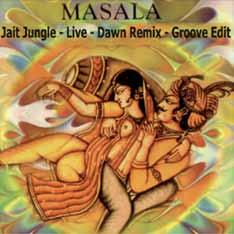
Unfortunately its story that has had a bad ending as boliwar contracted Parkinson disease, and since then he’s been living in a clinic on the mountains.
Regarding African music, I’ve been working for some years with a musician from Cameroon called Niba boniface. We would re-interpret old melodies from Central Africa with 6/8 rhythm, most of the times. The band was named Data from Africa. There was also a drummer from Sudan called Aatif. It was a quite a difficult music, also in the context of World music. We couldn’t release any album, but I recently made our best demos available on my Soundcloud channel.
•How did the release Les Grands Voyages de l’Amour with French label, Hot Banana come about
The song was originally released on Riot City in 1999, but in 2004 Fabrice Guarnasci -

one, a French promoter, invited me to play at a club in Aix-en-Provence. This was my first gig as a DJ. I played New Wave tracks as well as some of my own music. The performance went really well, and it was there I met The Hacker and Kiko who invited me to their studio to produce a track together: “Viens Chez Moi”, that is featured in the EP “Les Grands Voyages de l’Amour” released by Hot banana.
•In the early 2000’s there was this kind of revival of electro-disco with labels like Gigolo releasing artists like Miss Kittin & The Hacker, this led to your first mix compilation released on another French label, Yellow Productions, run by Bob Sinclair. How did that come about ?
It was Fabrice Guarnascione who introduced me to yellow Productions. I was asked to produce and mix tracks to be released on CD: “The Disco Tech of Alexander Robotnick” and it had to include some Italo tracks.
I did it in my own style, mixing New Wave, Electroclash, and dark but interesting Italo Disco tracks. I took this opportunity while compiling this to consolidate my mixing style, a style that still represents me today, irrispective from the genres of dance music.
36
•What made you decide to start DJIng ?
I needed money. I thought I would do it for a few years as long as the ‘80s revival went on. As a musician, I didn’t hold DJing in much consideration. but I later changed my mind and became fond of it. During my gigs, rather than sitting in the backstage, I would listen to the other DJs on the lineup (when I liked their music). So I evolved and developed my original way of DJing using Ableton as well as my skills as a musician. So rather than being around for a while and then leaving, like many heroes of the ‘80s, I am still here...
•In recent years you have stopped DJing, why did you decide to stop ?
Actually I didn’t really stop...I just reduced the number of gigs, giving priority to Italian clubs, because what I am really sick and tired of is travelling by air, especially now. but I still have a lot of fun DJing, of course. So I sometimes give in and accept to play in Europe. It’s not easy to give up completely, ego is always there to tickle me back.
•How did the collaberation with Ludus Pinsky, Italicimenti & The Analog Session, come about ? What is the musical direction for these collaberations ? What is involved with these live recordings as The Analog Session, do you record hours of music then edit what you think could be considered a “track” ?
For many years the synthesizers were only used for production and were driven and synchronized by MIDI systems.
So they lost their identity as musical instruments. The Analog Session project was aimed at recovering the use of synths as instruments by improvising on them. The other crucial point of our project is the use of modular synths, some of them put together by Ludus himself. before starting to work on the album, we decided to shoot our performance and that’s how “N5 from Outer Space”, our best known video, was born (so far 1,5M views on youtube).
In our setup some synths are driven by a sequencer together with the drums, whilst others are played live improvising on them. Since then (it was 14 years ago) we‘ve made many more videos and produced several albums. The first (The Analog Ses -
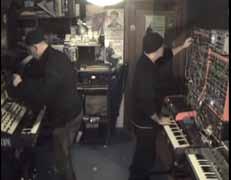
sion) was released by UK label This is Music in 2010, then the following albums “ b lack Ground”, “Seven Textures of Sound” and “When Machines Get Funky” were released on my label Hot Elephant Music. We performed 15 concerts in Italy, but we gave up because our setup was too complicated and not reliable enough. There are many videos on youTube of our performances. Editing has always been a crucial part of our work. We do not record hours and hours of improvisation, but limit ourselves to a couple of takes. Then the painful part comes: dumping some parts which we do like but cannot fit into the track, or choosing between two equally good takes. It’s a tough job but we are happy with the results.
Italcimenti is a completely different project mostly based on irony. It came to life in 2003, well before The Analog Session. The name we chose is ironic in itself, it plays with the famous brand “Italcementi”. Not to mention the irony of

37 37
some titles such as “Structural Collapse”, or “A Dream Called Cement”. The sound is similar to The Analog Session’s because the two projects share many instruments, but it’s definitely much less serious.
•What kind of music do you like to listen to when not producing your own.
I love listening Jazz music of the ‘60s, especially John Coltrane, New Wave, Steve Reich, Afro music, most of the time while I am driving. I often listen to “Radio Classica”, a national radio channel, especially when they air music from the 20th century, which is my favourite, starting with Russian composers.
I am also very much interested in contemporary classical music. I have started to appreciate this more and more. I sometimes listen to some of my DJ sets from the past.
•At over 70 years old you don’t seem to be slowing down, your production outlet is prolific as ever. You are obviously as passionate about music now as you have ever been. What is next for you ?
Working at my studio on my tracks, doing remixes, DJing….Robotnick as usual. I am now working on a very innovative project with a well known Italian Jazz musician.... but that’s still top secret for now.

www.alexander-robotnick.it www.hot-elephant.com

Robotnick on ‘Dance By Dance’
“Dance boy Dance is undoubtedly an underground track: In those days I’d work in a windowless basement lit up by colored neon-lights which I called “My Cripta”. It reflects the kind of mood there was in Florence in the early 80s: A mix of irony and darkness that was very exciting and spontaneous, but unfortunately vanished, choked by fashion and “stylism” during the mid 80s. In all the tracks I did as Robotnick there is always something theatrical. So I’d imagine the protagonist of the track as an old dirty guy who is turned on by some dancing boys, a somewhat horror scene.”
Robotnick on Problemes d’Amour:
“What I am most proud about are the lyrics. It’s the story of a robot who is in love, but afraid his sweetheart may realise his eyes are not human and his lips are not warm enough:‘Aua is the robot’s cry, suffering for love, without tears but crying all day long’. It’s an ironic dystopia. but the top of humour comes withthe refrain: ‘but love has no rules and stays the same throughout the centuries. At night I don’t snore and in the morning my breath is not bad’ says the robot to console himself. Humour has always been the key to inspiration for me, and this kind of irreverent (often dark) humour that was typical of the early 80’s was a wide-spread feeling in Florence. We spent a lot of time laughing, not because those times saw no tragedy, but maybe because we had been taking ourselves too seriously in the 70’s. Τhere was an urge to question everything including ourselves.”
38
Alexander Robotnick latest release ‘Kind of Disco’ is out now on his label Hot Elephant.


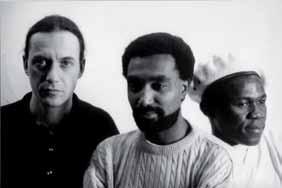


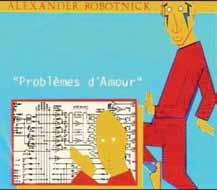
39
AnOThe R TASTe
by DISCOPaTRICk
Another Taste is a Rotterdam-born concept band formed by a group of longtime friends, consisting of bobby van Putten (keys), bob Roche (bass), barend Lippens (keys) and Teun van Zoggel (drums). They bring together a blend of boogie, 70’s funk and obscure disco - birthed from unearthing forgotten sounds and reinventing them for the modern era. A recipe they’ve been cooking up successfully over the last years in the studio, through their label Space Grapes and on tour through some of Europe’s finest stages.
Inspired by the obscurity and the do-it-yourself approach of private press culture of the late 1970s and 80s, their first releases were mostly a product of late night sessions between the four of them at the studio of their co-producer Danilo Plessow (MCDE), leading to the founding of Space Grapes Records. No computers, straight-up feels instead. Experimenting with tape and analogue equipment only, Another Taste found their sound in the beauty of the imperfection.
The band’s first songs were released under various pseudonyms such as Mad Honey, GAL x TC or Jambonne and quickly gathered them a loyal following and support from the likes of Gilles Peterson, Kenny Dope and many more.
Another Taste ripples their sound beyond the studio and onto the stage. In their live performances they introduce additional band members in Sarina Voorn (Vox), Diogo Carvalho (percussion) and Florian Verhagen (guitar). A core group with whom they’ve played at prestigious festivals such as Worldwide or Kappa Future and legendary venues such as Jazz Cafe London, New Morning Paris, and Tresor berlin.
d P: Upward bound was first published as a mystery song on youtube a while ago. I remember the comments which had a lot of speculations. Then it was removed and the first 12 inch came out which was sold out in no time. Can you tell the story behind the making of and the idea to put it on youtube as mystery track ?
at: Upward bound was recorded during our second studio session at Danilo’s. It was written and recorded on the spot in one day, and mixed the next morning. We really loved the feel of this one, but felt it was lacking some musical context
still. Later that month Danilo played it in Italy with Mr. Scruff, and part of that set was aired on his radio show on Worldwide FM. A few clips of that show subsequently started flowing around on the internet, and as people couldn’t figure out what our track was, it just kept circulating. Somebody uploaded it to youtube and it kept on going from there. As quite some people seemed obsessed about finding out what it was, we became convinced that the track would work as a 12” release and a few months later we wrote and recorded the b side “Treasure Every Sunset”.
40
 Photo by ruth nije bijvank
Photo by ruth nije bijvank

d P: Can you tell something about the members musical background and did they play in other groups before another taste?
at: Most of the band met at the Codarts conservatory in Rotterdam. Everybody was working on various projects. Late 2017 bob and Teun contacted bobby to start working on music together; bobby

had a freestanding place back then with plenty of room to set up instruments and record, so we started working on different kinds of music with the intent of having fun, mostly. barend joined a few months later and the nucleus of the group was formed. After about a year of tinkering about we sent some demos over to Danilo, who had just put together a studio setup centered around a tape machine, a big mixing desk and some nice outboard. We set up some dates and drove over with a car full of instruments and some musical ideas and got to work for a few days, which resulted in the GAL x TC track most notably. After this was done we were absolutely hooked on this way of working as it really gave us that wholesome sound, and more studio dates were planned very soon after that!
d P: Tell us about the proces how you make a new song ?
at: Usually bob or barend comes to the session with a musical idea, be it just a melody, chord structure or a fully written groove with horns etc. For example: GAL x TC was already fully written out in groove and arrangement before we recorded the first note. b ut Mad Honey came out of a collective jam on the day itself. It really depends but we can make it work in different ways! Lately we do sketch out our tracks on the computer before setting up and committing to our tape machine.
42
Teun and Barend setting up the drumkit before tracking in Stuttgart
Danilo and Bobby dialing in a patch in the Paris studio

Bob going over some parts before recording in Paris
d P: In march we expect your first album. Can you talk about the the new album artwork and how that came together.
at: That’s a bit of a story! The concept of the album started back when we chose Mad Honey as our main project name. We worked with a very talented local artist on the artwork concept, which was finalized and ready to go. Then we were contacted by another band using the same name. Just like us, they were about to release their debut album, and despite being on a different continent doing very different music, we made the decision to pick a new name, which turned out to be Another Taste. That’s also when we got to work on a new album cover concept, and contacted another local artist to work on it with us.

Danilo and Bobby tracking vocals in
Rotterdam
d P: Share a memorable moment in the making of the album.
AT: A nice moment for us was the first track that we fully recorded in our own studio in Hoogvliet, which went on to be the opener of our album. Very soon after we had a storm in The Netherlands which took off part of the roof of our studio, which resulted in a massive leak. Water came through the suspended ceiling which is made of some sort of paper, and all this mess came down on our newly-bought mixing desk, tape machine, outboard gear.. it was a real nightmare. Luckily our power was completely off and with some help we were able to store everything close by in a vacant storefront. After a few weeks of meticulous drying and cleaning we were able to -almost miraculously- get everything back up and running again! We used the off-time to start working on our live show, so we turned it to something positive in the end.

43
43
The aftermath of the Hoogvliet studio roof caving in, resulting in a small catastrophe
d P: Who were your musical influences
at: Most notably we strive to pay homage to the golden era of the mid 70ies to early 80ies (post-)disco culture. When it comes to specific names, think Leroy b urgess & Patrick Adams, Azymuth, Mizell b ros, Roy Ayers, Lonnie Liston Smith, Patrice Rushen, LeRoy Hutson, Donny Hathaway, Curtis Mayfield, bobby Hutcherson, Chain Reaction, b rief Encounter and offcourse many more. For those who use Spotify, we have created a playlist titled “Another Taste Selections” where we list many of our influences.
d P: you had several names before this final name, tell me about the proces of choosing a bandname ?
at: We started out purely as a studio project without much of a broader concept, just writing and recording tracks in different styles, and we put together what we felt was in the same vein. The choosing of a bandname was without a lot of thought really, just what sounded fun and what worked. It was only afterwards that we discovered how much of a hassle it would be to have all of these different names when it comes to building a name for yourself, but we will keep on using different aliases regardless, as long as we can connect it to Another Taste.
d P: A year ago you started touring, and got a lot of positive feedback. What are your future touring plans and any top ones place to play ?
at: Last year was a dream come true as we already managed to play clubs and festivals throughout Europe such as Jazz Café, New Morning, Théatre de la Mer during Worldwide Festival and others. For this year we are working on a bigger and stronger show centered around the album release, and have confirmed Southport Weekender, Nuits Sonores, Polifonic, Flow Festival and others. We don’t have concrete “bucket list” spots but would love to discover many more crowds, places & spaces around the world and can’t wait to see where it will take us!

After their recent ADE showcase, performing a solid 2 hours at OT301 in Amsterdam
d P: What can we expect for your future projects ?
at: Since the formation of our live band, we have been working on a lot of material with lead singer Sarina, as well as involving Florian and Diogo in our studio work. There’s lots of things lined up for us as a band as well as the label. Expect to see the return of some previous aliases!
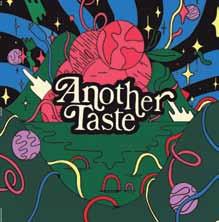
44
Artwork of the upcoming debut album

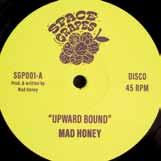

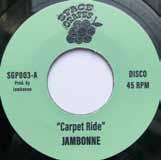



45 45
Photo by ruth nije bijvank
dIGGInG JApAn wITh G IAnluCA BeCCARISI (TAvA TAvA RARe)
By SkEmE RICHaRDS
(THE NOSTalGIa kING)
It’s been an interesting journey over the years how I’ve met people with similar interest either through word of mouth, social media or personal connections via others that are in a small circle of collectors and before those same people became known relatively know by the masses. Serious collectors always seem to find one another especially in a world where every suddenly collects but there’s usually some that uniquely stands out about certain people that make you gravitate towards them. Records are usually the common denominator but as my brother and deep collector b iz Markie (R.I.P) would say, “what else you got!?” is exactly how I’ve become friends with some of the most dedicated collectors in the world. As a collector, I’ve always had a love for Japanese culture of all sorts which dates back to the 70’s as a kid, from samurai films to anime and manga to soundtracks and beyond but throughout the years, I’ve only met a handful of collectors here in the states that I really connected with. Maybe it’s because we’re in totally different scenes or the stars haven’t aligned up yet why it hasn’t happened. but through mutual friends in other areas which in this case is my brother Mike Wallace is how I was first introduced to one of Italy’s deepest collectors of Japense culture, Gianluca beccarisi also known as 2Daze.
Spending 30 years building an incredible collection to taking that same passion and starting the Tava Tava Rare record label which quickly turned into a headquarters which serves not only as a retail store but community gathering space, art gallery and film / soundtrack lovers heaven known as Tava Tava Cave, 2Daze has bottled all is loves up in one to bring something unique to his city. I recently caught up with Gianluca to discuss how get was first introduced to a culture that
was so far away from his home country and what drives him to continue the preservation of the culture that he loves so much.
*Note: Tava Tava Rare isn’t all Japanese, no! His love of Italian crime cinema and Poliziotteschi films are equally as loved as you will find when browsing the labels catalog that he’s done special releases to some of his favorite films and soundtracks.
Skeme: Let’s start out at the beginning, how did you first get introduced to anime and manga and why did it capture attention so much?
Gianluca: I had my very first approach to the world of anime as a child in April 1978 when the first episode of the anime UFO RO bOT GRENDIZER (UFO RObOT GOLDRAKE in Italy) was broadcast in Italy. Grendizer was the first anime robotic broadcast in Italy and paved the way for the invasion of Japanese anime. It was a shock! Something really powerful, something never seen before! Space thunder! Spin drill! Rocket punch! giant robots, cruel villains engaging music! Oh!! Everyone the next day at school wanted to be Duke Fleed and save the earth from King Vega!
Skeme: That’s really interesting to hear because we had similar experiences here in the states with various series as well. I’ve always heard that anime was very big in Italy as it was in Japan early on so that’s good to know. What were some of your favorite series and how was the scene of fans and collectors during that time?
Gianluca: With grendizer there was the real boom of anime in Italy, wherever you found toys and gadgets that came from japan, it was a real invasion! A pleasure for us guys! There was everything! From
46

47 47


“die cast toys” to comics to vinyl records with the TV theme songs (in Italian) of each series that arrived. The interest then revived in the early 90s with the arrival of the first manga traslated in italian, the series on VHS and TV bGM CD. My favorite series were the sci-fi series (tatsunoko heroes, yamato, Harlock etc.), Lupine 3 (first series), robotic series (Mazinger Z, Getter Robot, Daitarn3, Gundam, Zambot 3, Grendizer, Jeeg, Gaiking etc..) Tokusatsu (Spectraman, Megaloman, Zabogar) and horror like Devilman and yokai Ningen bem. What I can tell you is that right at the time, in the early 90s, a scene of anime collectors and lovers began to form. basically we were the children of the Grendizer generation who were trying to reappropriate and relive those atmospheres and a fundamental part of this was precisely my obsessive search for that music that accompanied those images. Even though I had already shared a passion for hip hop with that of anime and 70s genre cinema for some time.
Skeme: you seem to really have a strong appreciation and connection to anime and soundtracks and have built up a very impressive collection. When did you start becoming serious with collecting and have soundtracks, posters, vintage toys and more. What are some of your favorite things in your collection?
Gianluca: Thanks for the “impressive” let’s say that it was in those years, at the end of the 80s, that I began to feel that impulse to seek out and have everything that linked me to a particular emotion from the past. but at the time it was very difficult to find material, we often went hunting for old shops or warehouses or comic fairs, flea
markets, former cinemas and the SAC, where the old posters were archived. The more organized relied on friends who left for Japan, entrusting them with long lists of CDs, LPs or toys to look for and buy. Unfortunately the internet was still a mirage. The pieces of my collection that I am most proud of are certainly the Jumbos of Grendizer and Great Mazinger, my CD boxes of TV bGM and the original Japanese vinyls of TV bGM.
Skeme: Let’s talk about your record label Tava Tava Rare which focuses on reissuing, but also presenting for the first time some of the best TV bGM, OST’s and deep rare grooves from Japan in the 1970’s but also rare Italian soundtracks as well. you’ve released some really amazing stuff so far and some of my favorite series and soundtracks like The Gorilla Seven, UFO Robot Grendizer and Tokyo Violenta to name a few. How did the idea of making a record label focusing on these genres come about?

48
Gianluca: The thing that mainly struck me from an early age was the music. Then when I later began to frequent the hip-hop world and collect funk rap music and all kinds of music, I found songs that contained mega grooves and perfect parts to be sampled. So from the first hour I compared my musical searches, those of the perfect b - boy and those that went beyond my passion for rap and funk classics, and in the end, I found myself looking for everything. Starting from the old soundtracks LPs of the 70s, especially police ones with the music of Micalizzi, De Angelis, Trovajoli, Cipriani, Umiliani, Morricone to name a few, which recreated that groove up obviously in the b laxploitation and the soundtracks of Quincy Jones, Schifrin, Roy budd, Curtis Mayfield, Isaac Hayes, in the TV Libraries etc.. And the same sound I found in bGM TVs of Chumei Watanabe, Shunsuke Kikuchi, Takeo yamashita, bob Sakuma, Ichiro Araki etc. Then I got the idea after having collaborated in the reissue of some Cometa music editions records before and the experience of the collective of DJ’s TAVA TAVA in bologna with the DJ’s Guenda & Kyna and others with whom we periodically organized vinyl markets and DJ’ing open practices where in the my DJ sets I also began to insert bGM, soundtracks and rare grooves from all over the world

and I thought of them, “it wouldn’t be bad to create compilations with the rarest pieces full of grooves and the beautiful ones to be sampled with mega samples!”. From there to the printing of PINK y VIOLENCE, the step was short and given the success of the operation together with my wife K yNA (DJ of the old hip-hop school of bologna) we decided to found
TAVA TAVA RARE, a label to reprint only rare grooves TV bGM and 70s niche and mostly little known soundtracks (GORILLA 7, Play Girl, Pinky Violence movies etc). Carefully selected by 2DAZE, that is me.
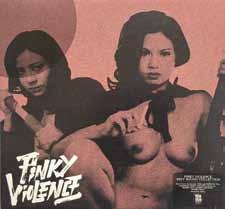
Skeme: you’ve chosen a really nice catalog of sounds and series, how do you know and choose what you want to present on vinyl?
Gianluca: I think it’s cause my continuous research that has been going on for more than thirty years in the search for groove and my passion for cinema and anime that leads me to dig even more into the productions of those years of that fantastic decade, late 60s early 80s, which was so prolific and rich in experimentation, all over the world. And this led me to have a house full of records and rare CD boxes from all the craziest and rarest series of those times and a decent knowledge on the subject :). Perhaps you who have the same passions as me and have traveled the world, you will have realized apart from Japan and the USA as in every part of Europe, Africa, India, the Soviet Union, Eastern Europe, Korea, China, Asia, countries Arabs, South America, Australia etc. every country in the world at the time had recorded some groove bomb on a vinyl. Knowing this always leads me to go forward in research and try as much as possible to bring some rare pearls back to everyone’s knowledge, just for the pleasure of doing it and for passion, absolutely not for money. in fact what I earn with one project I reinvest in the next project. I would always like to discover songs and composers who may not be too well known to the masses.
49
Skeme: One thing that I really love is that you present things really well with all new cover artwork and sound quality is amazing. Who creates the artwork for the covers for Tava Tava Rare?
Gianluca: Thanks for the question and for the compliments. In the end, in this project I wanted to involve my homies writers, graphic artists and calligraphers: DEEP MASITO (CDF) and RICCARDO ALI as regards the graphics, the drawings and the original writings/logos of the LPs and the cinematic Frank Gnafo (Trigemino) for the research of the drawings and graphics of the 7” detective stories. One of the things I don’t really like are copy and paste, in fact all the records I produce, as well as having new graphics and covers, are always a collection of songs selected by me. So if, for example, I reissue the Grendizer tv bgm LP , it’s not the faithful copy of the bgm LP printed in japan in the 70s, but the best (in my opinion) of the songs of all the existing bgm tracks of the series, chosen based on the groove and presence samples without neglecting the historical and representative songs of the Anime tv series. For the mastering I rely on DJ Argento and his Silverroom studio. Let’s say that the merit of the success of the Tava Tava Rare products is certainly also theirs, a real team of enthusiasts.
Skeme: Having a great team around you to help foster and bring visions to light is so important. Those talented people that all share the same love bring amazing ideas out. Let’s talk about your new business that you’ve recently begun, Tava Tava Cave which is a store that focuses on selling releases from your label and other vinyl. What made you want to open a store?
Gianluca: TAVA TAVA CAVE is more than a real shop it’s the “container” of the TAVA TAVA with open practices, workshops, the headquarters of the Tava Tava Rare label and of the cultural association. A real den where lovers of vinyl, cinema, music, anime, collecting etc. can meet and exchange ideas, participate in our initiatives and workshops. For example, in January we organized an exhibition on anime with the drawings of the master Junichi Hayama and in October a vinyl market for a first time in Isernia ). I was a cameraman for 30 years, but working with music and having a space where being able to share my passions has always been a dream of mine and I finally had the opportunity to make it come true in a place where this reality did not exist.
Skeme: That’s amazing! you’ve really helped to build a community of people who



50

love and appreciate the same things that you do as well. It’s seems so simple yet so in-depth with the passion. What else do you sell in the store besides your releases?
Gianluca: Here you can find many vintage Japanese toys, Japanese art books, DVD, CD, vinyl, manga, original movie posters, books about cinema, art, music and more that associated with it.
Skeme: What are your top 5 anime series”
Gianluca: Definitely UFO Robot Grendizer and the Go Nagai anime, Cashern. Tatsunoko super heroes anime, Gundam, Ashita No Joe and Lupin 3 (1st series).
Skeme: Since you are Italian it’s only right that I ask you what your top 5 favorite Poliziotteschi movies / soundtracks are?
Gianluca: FILMS: LA banda Del Gobbo (b rothers Til We Die), Milano Calibro 9,
Roma A Mano Armata (The Tough Ones), Squadra Antiscippo (A Cop In b lue Jeans), Il Cittadino Si Ribella (Street Law) Soundtracks: Rome Violenta, Squadra Anitruffa, Roma A Mano Armata, La Mala Ordina, Il Cittadino Si Ribella, Il Giustiziere Sfida La Citta’.. Ops Only 5??
Skeme: What can we expect next from Tava Tava Rare?
Gianluca: More beautiful records made with passion. Another long series of vinyl surprises for rare groove lovers!
51
eAST vIll AG e e yeIT ’S All TRue
by Pat vogt
To me, as a collector of Rap, Graffiti and bboy ephemera, the East village Eye has been a very important source of information. if you wanted to know what was going on in the undergound new york art, rap, Fashion or Music scene in the late 70’s till mid 80’s, The Eye was ground zero. and it looked great too.
From May 1979 to January of 1987, the East Village Eye, a monthly magazine of popular and avant garde culture, exerted a profound influence that eventually reached across the entire world. The Eye débuted with the no-wave musician James Chance, then known as James White, on the cover. The newspaper was large: eleven by seventeen inches folded; partially to be distinctive, and partially for a wide centerfold canvas. The first Eye had the homespun look of a zine—many of the ads were handwritten and hand-drawn. Later issues were more conventional. but they continued to feature original artwork, including comic strips. Many artists like Futura2000, Walter Robinson, Phase2, Christoff Kohlhofer and Michael Roman made work specifically for publication by creating pullout centerfolds.
Leonard Abrams was an American journalist who moved to the East Village in the mid-1970s. Abrams saved up enough money to attend a graphics and paste up course where he created a dummy magazine. Soon after, he rented a basement storefront at 167 Ludlow Street, one block below Houston Street. The East Village Eye was born. “It’s all true,” the magazine’s tagline sardonically declared. Leonard Abrams was just 24 years old when he started the East Village Eye. Filling a void left after the closing of the East Village Other seven years before, and riding the wave of a newly revived East Village kick-started by CbGb and the rise of Punk, the Eye grew quickly and published
regularly from May 1979 through January 1987. Ultimately, the somewhat erratic monthly was to produce 72 issues. Early issues had print runs of 5,000; later issues in the mid teens. Abrams defined the Eye as a “community in print” incorporating news, nightclubs, art, film, music, illustrations, fashion and poetry.
“i probably would have pulled the plug a lot earlier but that i felt it was too important not to keep doing it.”
-Leonard Abrams.
New york experienced a communitydriven cultural renaissance during the early 1980s that stands as one of the most influential in its, and perhaps any city’s, history. The Eye charted this “cultural renaissance” in real time. The paper can now be prized for historic art coverage that helped fuel the highly publicized rise of East Village artists and galleries in the early-1980s. Abrams published the work of writers and artists now considered seminal. There was no pay but plenty of high profile contributors like Richard Hell, Cookie Mueller, Glenn O’brien, Futura 2000, David Wojnarowicz, and Danceteria owner Rudolf. The Eye’s first art director was Christof Kohlhofer, a member of the downtown artist group Collaborative Projects, Inc. (Colab). Kohlhofer, who had studied under Joseph beuys, introduced Abrams to a number of local artists. Kohlhofer designed the Eye’s first logo, an Eye of Providence cast against the Manhattan skyline, which he drew from photographs he had taken atop the Williamsburg bridge. The Eye chronicled Colab projects like the Times Square Show (now seen as one of the most important New york exhibitions of the twentieth century) and the gallery AbC No Rio. Under Kohlhofer’s tutelage, the Eye began its much lauded tradition of commissioning artists to create centerfolds for each issue,
52

53
First Edition, 1979 (Pat vogt Collection)



56
Futura 2000-Centerfold, 1982 (Pat vogt Collection)
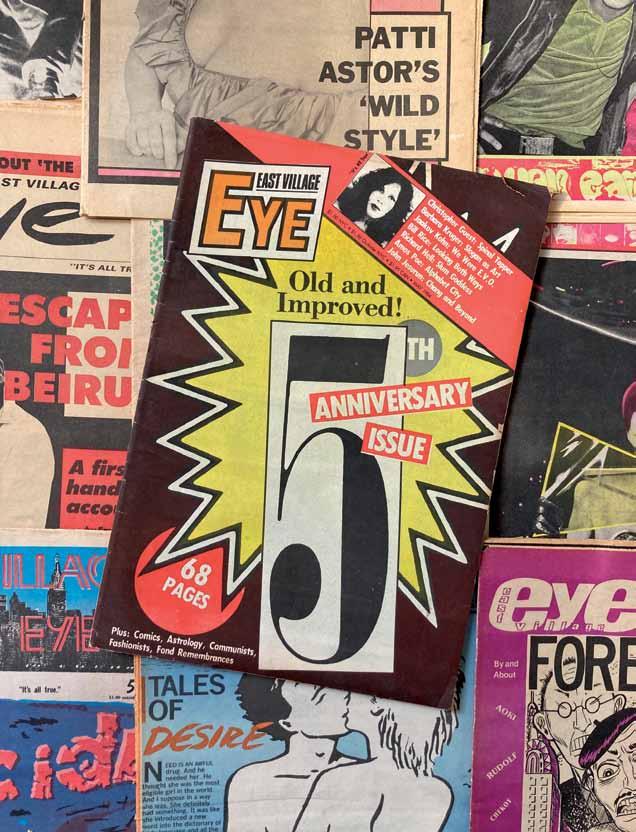
57
Futura 2000-Cover, 1984 (Pat vogt Collection)
providing greater public exposure to artists such as Christy Rupp, Ellen berkenblit, Sue Coe, Richard Hambleton, Mike bidlo, and many other visual artists.
During the early-to mid-1980s, the Eye’s art editors were Walter Robinson and Carlo McCormick, authors of the seminal Art in America article that first defined East Village art. Though, at that time the magazine’s keen hybridity was less than enthusiastically received by the institutional art world, which viewed the growing influence of graffiti, fashion, and punk, with disdain. Features editor Steven Hager, later the author of both legendary books “Hip Hop: The Illustrated History of break Dancing, Rap Music, and Graffiti” and “Art After Midnight: The East Village Scene” and writer of the script “ The Perfect beat” which became the movie “beat Street, kept the Eye on top of developments in graffiti and rap music.
“i would credit Chris with steering the Eye more towards art, but also for injecting a beuys-like approach. basically doing whatever is necessary at the time.”
-Leonard Abrams
The Eye honored New york’s black art and night life. In the January, 1982, issue alone, there are interviews with the d.j. Afrika bambaataa and the graffiti artist Fab 5 Freddy; a review of the film the latter had recently starred in, “Wild Style,” now a hiphop classic; a photo series of teens breakdancing at Lincoln Center; and a fashion writeup of “The Crew Look,” advising a reader on the components of outfits worn by “break-dancer crews, bicycle clubs, gangs.” This issue includes interviews with the rock singer Joan Jett and the gay activist Vito Russo, a characteristically eclectic portrait of New york culture. Graffiti, too, was taken seriously: the same 1982 issue profiles, in addition to Fab 5 Freddy, who’d been part of the Fabulous 5 group in the late seventies, known for spray-painting entire subway cars, Futura 2000, another graffiti artist who’d begun on subways, and by 1981 was touring with the Clash, creating work live onstage as the band performed. The critic Steven Hager, who was fired from the Daily News for praising graffiti, has said that the Eye was the only place that would let him
write seriously about the medium. There’s a friendly rivalry between the Eye and the Village Voice about who was the first to ever define hip-hop in print, but the Eye seems to have won. (In that 1982 interview (see next spread) with Afrika bambaataa, Michael Holman offered this parenthetical: “Hip hop: the all inclusive tag for the rapping, breaking, graffiti-writing, crew fashion wearing street sub-culture.”).
“one of the Eye’s most important contributions was the framing of gossip coverage in such a way that artists were treated as demi-gods”.
-Dan Cameron
Seminal avant garde writers including Richard Hell, whose “Slum Journal” explained the New york origins of punk; Cookie Mueller, who dished out bold and often hilarious health advice; Glenn O’brien, the leading avant-pop writer and media figure who chose the Eye to expound on the New york yankees and other essential sports matters; and the aforementioned David Wojnarowicz, who wrote about his harrowing past and present as a street hustler and later as an artist living with HIV.
Groundbreaking small clubs and performance spaces like 8bC, AbC No Rio and Darinka, which developed such artists as Karen Finlay and Ethyl Eichelberger, advertised and were written about in the Eye and often nowhere else. Many such artists actually moved to New york because of what they read in the Eye, which in this pre-Internet age was one of the few sources of news on independent culture during one of the most important decades for the arts in New york.
The cutting edge of fashion, the only art form we display every day of our lives, took form in the pages of the Eye with the active participation of couturiers Animal x, betsy Johnson, Manic Panic, Natasha, Patricia Field, Trash & Vaudeville and many others, including the naturally stylish on the streets of New york, from the South bronx to the Lower East Side.
This was the New york of such pop music pioneers as the Lounge Lizards, the beastie boys, Nina Hagen, billy Idol, Richard
58

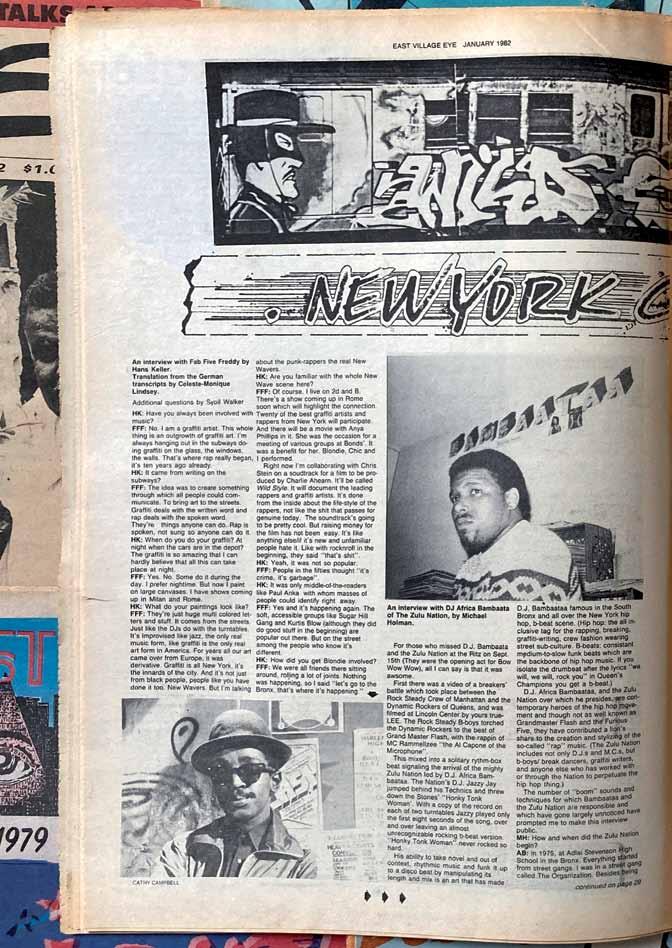

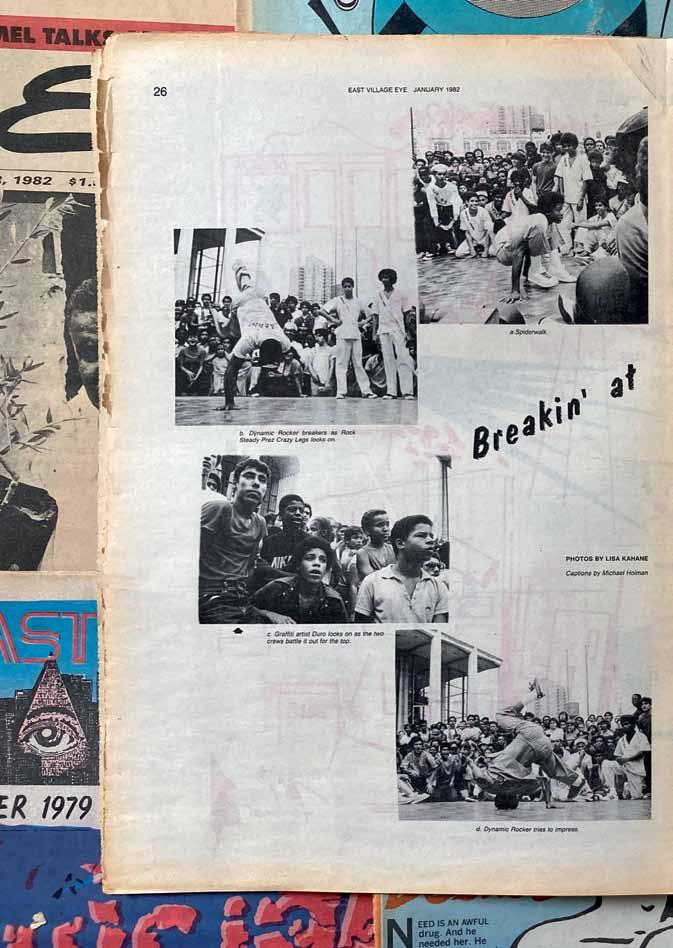


64
Phase 2 article, 1982 (Pat vogt Collection)

65
danceteria ads (Pat vogt Collection)

times square show, 1980 (Pat vogt Collection)
66

67
Patti astor-Wildstyle, Feb 1983 (Pat vogt Collection)
butler and Iggy Pop; filmmakers David Lynch, Nick Zedd and Jim Jarmusch; photographers Robert Mapplethorpe and Helmut Newton, and other cultural pioneers who found early recognition in the East Village Eye.
“i’m most proud of having gotten so many of them out. and hearing someone say something like “i moved to ny because i read the Eye in my home state.”
-Leonard Abrams.
Over a period of eight years, the magazine chronicled the spectacular rise and eventual implosion of the East Village art scene. The Eye’s reach was a huge success for a magazine that could barely afford to pay its permanent staff, but by 1987, Abrams decided to call it a
day. “I got physically exhausted. There was more than one moment when I wanted to throw in the towel.” The collapse of the East Village gallery scene had added to the stress, resulting in less ad revenue for the magazine. The last issue of the Eye, published in January 1987, was a bumper “best of” issue, highlighting the magazine’s biggest scoops and most popular stories. Ultimately, The East Village Eye was the monthly record of a time and place in which the radical shifts of the postVietnam era produced a reckless thirst for experience and expression that redefined the world we live in today. On April 1, 2023, Abrams died of a heart attack while at a rest stop on the New Jersey Turnpike while returning to Queens from a business trip. He was just 68 years old.

68
Crazy Legs, Rocksteady Crew

TAlKIn dIRT y
By SPaNkIE HazaRD aND SwIFFT EDITS
(SEDGwICk RECORDS)
Spankie Hazard and Swifft Edits (Sedgwick Records) explore the disco lyrics that are thought about but not so often talked about.
Disco, in its purest form, is about escape and fantasy.
A sweaty, blurry dancefloor where your cares can’t intrude. Writhing bodies all around, dressed (or, depending on the venue, not-so-dressed) for maximum selfexpression or seduction. A whites-brownsgays-straights-freaks-squares-welcome zone where the rules of normal society are at best lightly applied.
Little wonder, then, that the lyrics of many disco tracks pushed the limits of what was acceptable in daily discourse, at least back in the genre’s 1970s heyday. Sometimes it was blatant. Take b lowfly, who having shocked and entertained in
the land of funk brought his bag of tricks to disco—and in the process must have generated as much laughter as passion on the dancefloor. His 1978 LP “ b lowfly’s Disco Party” featured a semen-dripping tongue on its cover and songs titled “Who Did I Eat Last Night?” and “Can I Come In your Mouth?” A few other artists joined b lowfly on the ultra-raunchy train: b. Murray gave the world a 12” disco single called “It’s Alright To Fuck All Night.” Cautious record store proprietors could flip the record around to show its alternative hype sticker: “It’s Alright To Truck All Night.”
Much more common were tracks that opted for subtlety … or a tiny bit, at any rate.

70
Double meanings. Steamy synonyms. Arousing analogies. Anything to create the plausible deniability required to beat the censors and get played on the radio. Not that disco invented this dodge. Lyricists of all sorts have long used indirect phrasing and carefully substituted words to tackle taboo subjects. but disco was a genre that made hedonism and (often unconventional) sexuality its beating heart. It pushed the boundaries harder than most.
Sometimes the English language, and others, were enriched as a result. The word “freak” existed before disco, but it hasn’t been the same since. Like its predecessor “funk”—another punchy word that un-coincidentally starts with an “f” and ends with a “k”—it could stand in for countless moods, circumstances, or physical activities. Leon Haywood’s “I Wanna Do Something Freaky To you” makes sure we’re clear about which physical activities he has in mind, with such lyrics as “your love is like a mountain, and I’d love to slide down into your canyon.” (Female backup singers: “Slide down.”) Leon claimed that he could “Put it where you want it as long as you need it. I’ll make it good,
and I won’t mistreat it.”
Existing slang terms could sometimes provide the necessary cover. “In The bush,” by Musique encourages listeners to “Push, Push! In the bush!” while The Salsoul Orchestra offers its own foliaged-themed advice in “Don’t beat Around The bush”. In case we’re tempted to think the band just wants us to be decisive in our decision-making, the chorus of female vocalists drive the point home: “Don’t play around my bush.”
The legendary Grace Jones used oblique language to take on subjects both weighty (trauma, sexual identity) and smutty— noteworthy track titles include “ below the belt” and “On your Knees.” In “Pull Up to the bumper,” the automotive fig leaf slips off rather quickly, unless she’s an advocate for reckless parallel parking: “Pull up to the bumper, baby, in your long black limousine. Pull up to the bumper baby, and drive it in between.”
No doubt you have your personal favorite bits of lightly disguised disco smut. Here are a few from our vinyl shelves that have kept us giggling for many, many years…

71
• Jammin’ Big Guitar - Vaughn Mason

Coming off the back of “bounce Rock Skate Roll”, in 1981 Vaughn released this track in which he talks in exaggerated but veiled terms about the size and potency of his “big guitar.” Lyrical delivery is shared between some very excited females (“Slip it! Slide it! Give me every inch! Ahh!”) and Vaughn, who assures his audience: “My big guitar is sweet, can’t you feel my body heat. I’ve got the lovin’ notion, here comes my magic potion! It’s silky smooth and round, it will make you get on down. From wherever you are, your bed, your drive, your car. Come feel my big guitar! Huhhh!”
• Doctor Boogie - Don Downing

Another slippery professional, this one in the medical field. Don calls himself the “Soul M.D.” and on this ultra-smooth pro -
duction he lets us know how he handles his patients. “I’m qualified, in slip and slide. If you feel the need now, my work is bone fide. In an emergency, call me!” Our favorite line, though, is: “Always on the dot, when I shoot my shot, (I) like my melon freezin’, I love my women hot.”
• I’m The One - Rainbow Brown

An entirely wholesome song title, but Patrick Adams made licentious poetry when he wrote the words: “My petals are open and waiting, wet with the dew of elation for you.” Heavens, how did Fonda Rae maintain her composure in the studio?
• Bring It Here - Wild Sugar
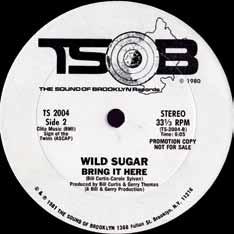
“There’s a need I have to feed, so baby bring my food.” Probably not an Uber Eats order.
72
• Is It All Over My Face - Loose Joints

Double points for this one—a tune with a sex reference as a title made by a band with a drug reference for a name. And the song comes (ahem) in two different vocal versions, male and female, so DJs could encourage any crowd.
• Get It Up For Love - Tata Vega

The command get it up is a classic and usefully vague songwriting go-to, but Tata adds lustful urgency to the wistful Ned Doheny original. The lyrics are rather chaste, but we can’t help taking the title line literally. Marketers of erectile dysfunction pills take note: “There’s a longing in the people, no one knows just when the heartaches will cease. you can flee in terror, you can stay and fight. you can stand in line and scream, ‘It’s just not right!’”
• Love Injection - Trussel

Produced by Fred Wesley, this gorgeous vocal number delivers a wholesome message: it’s all about a guy who gives up a life of smoke and pills once he realizes that “a love injection” gets him “higher than the stars up in the sky.” yet the filthy minded among us are likely to focus on the provocative title and the chorus repeating “I need a love injection.” Lyrically it’s on the harmless side, except for the use of the highly suggestive term “love socket”. There’s little doubt that a version by a female vocalist—we vote for Millie Jackson—would have truly killed it.
• Ride A Wild Horse - Disco Tex and his Sex-o-lettes

Although the group name suggests “sexy” content from the outset, this LP is
73
mostly pretty harmless. Well, except for the song “Ride A Wild Horse”, which is probably not about a young woman inviting a friend on an equestrian outing. “Giddy up, boy. Come on, come on, ride me. baby, ride a wild horse. Saddle up, get down to the source. Tame me and baby make me yours.”
• Doin’ The Dog - Creme D’Cocoa

This record is basically an answer to “He’s The Greatest Dancer” by Sister Sledge, and while the Sledge sisters kept their track on the family-friendly side, the Creme D’Cocoa boys, led by Tony Camillo, put lyrics together that would delight a drunken frat house party. “Doin’ the dog. Push, push, push. Doin’ the dog. Movin’ in behind. Doin’ the dog, all night long. Comin’ in the back door lookin’ fine.”
• The Dirty Dog - The Force

This is a song designed to pack the dance floor. Then, once it has people there, it lyrically changes the scene with a breathy, repeated male vocal line: “Get down on the floor, you know you like it.” The main vocals take the imagery the rest of the way: “I like the way, you dirty dog, I’ll push the bone right through you. That sexy way, dirty dog, make me wanna come to you.”
• Big Fun - Juice

This one leaves no doubt what it’s all about. but, to provide that much needed plausible deniability, the word “fun” has been used in a strategic way. “Girl, we can have big fun, together. Girl, we can molest each other. Girl, we can have big fun together, come together, be as one. Fun me, I’ll fun you.” It kind of makes us wonder why they bothered with the ruse, seeing as their rhythmically dense spacefunk track was never going to be a top40 hit. but, we thank them for their efforts, which make things so much more entertaining. “So, you’re feelin’ the music, I can see it on your face. And you’re feelin’ me, too, in that familiar place. I’m talkin’ about my sweet thang. It’s a fact, we’re about to make contact. Sweet contact. Now, baby, fun me.”
74

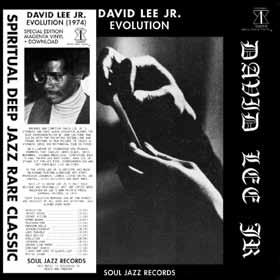






SOUL JAZZ RECORDS NEW RELEASES
SOUL JAZZ RECORDS RSD2024 RELEASES
www.souljazzrecords.co.uk
SOUL JAZZ RECORDS

Scan for online stock
Zwaanshals 283A, 3035 KH
Rotterdam, The netherlands
Vintage Mexican Hi-NRG/Disco soundsystem posters
Collection of Wild Life Archive
About Wild Life Archive: A collection of ephemera, books, magazines, clothing & related artifacts documenting dance music culture from its early origins through to today’s global scene including New york disco, Chicago house, Detroit techno, belgium new beat, Ibiza balearic and UK acid house to name a few.
This unique archive has been exhibited at world class museums and galleries including the Geffen Contemporary at MOCA in Los Angeles, Design Museum in London, Institute of Contemporary Art in London, barbican in London, Tate in Liverpool, V&A in Dundee, bozar in b russels, Philharmonie in Paris and Vitra Design Museum in Germany.


78
Patrick Miller, Club de Periodistas, Mexico City Poster invite, 1984
Soundset, Patrick Miller, Mexico City Poster invite, 1983

79
Polymarchs, Mexico City Poster invite, 4th anniversary, 1982
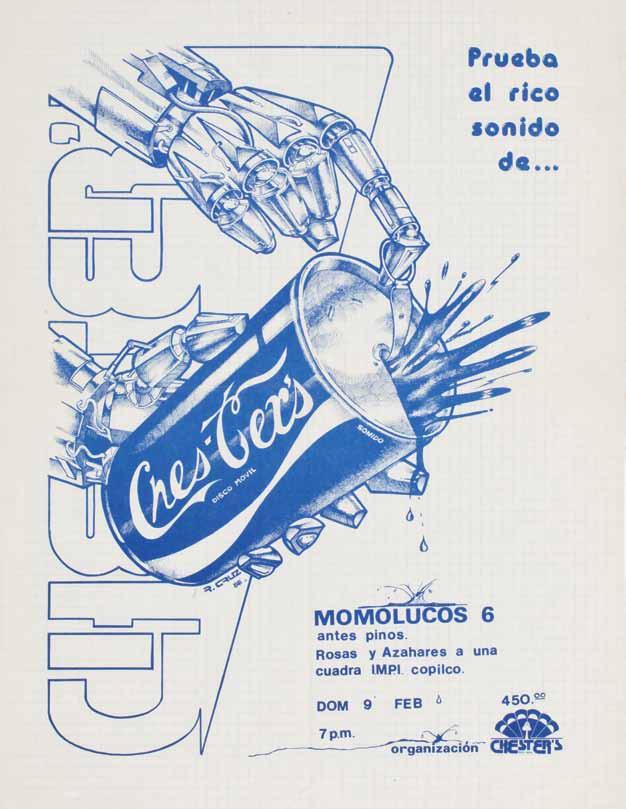
80
Chesters, Momolucos 6, Mexico City, Poster invite, 1986
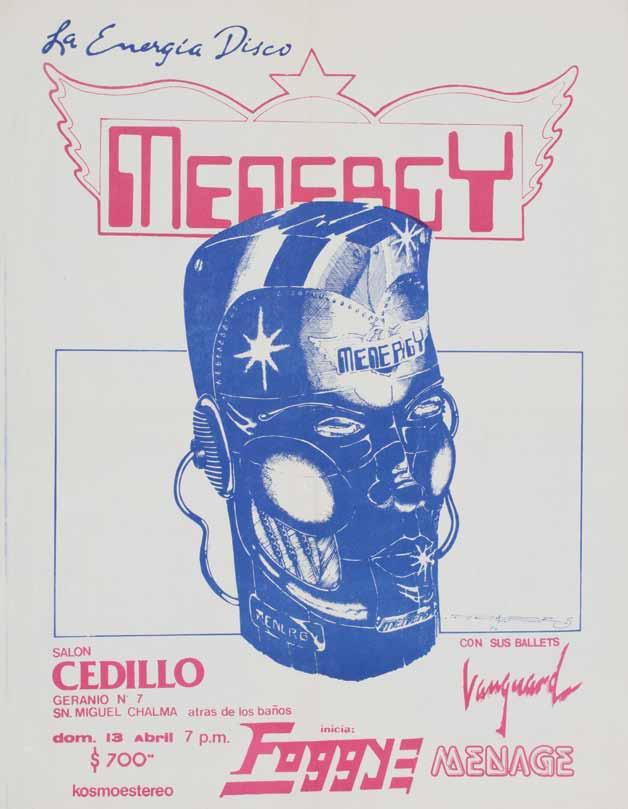
81
Menergy, Salon Cedillo, Mexico City Poster invite, 1986
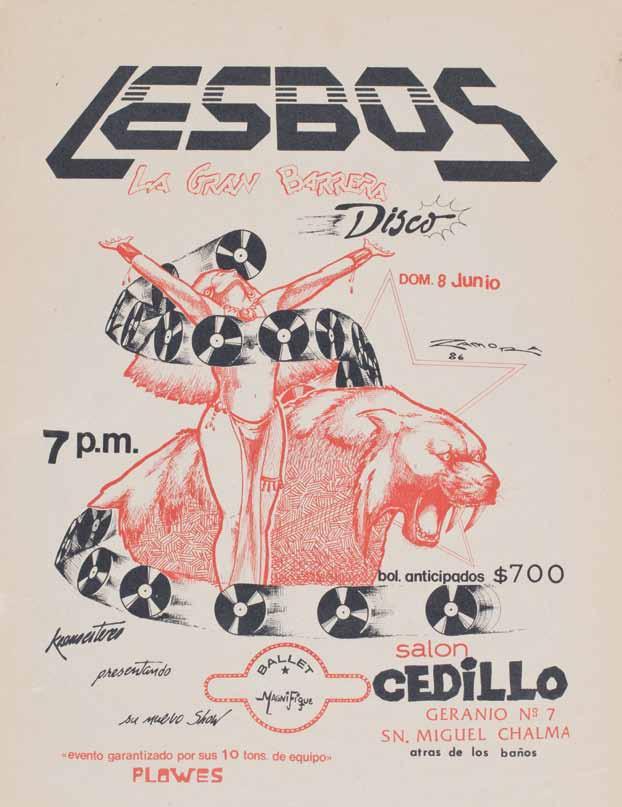
82
Lesbos, Salon Cedillo, Mexico City Poster invite, 1986

83
Chesters, Salon Forrajeria, Mexico City Poster invite, 1986
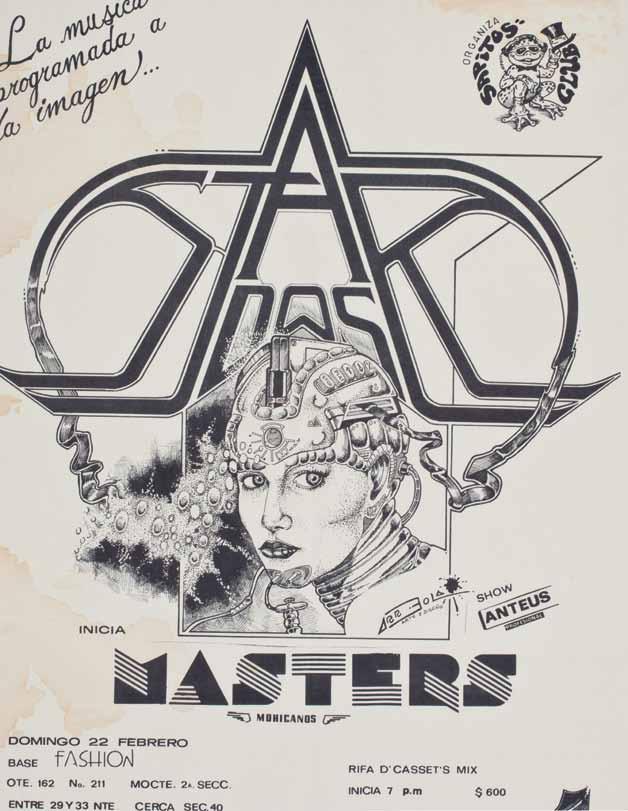
84
Stardos, Sapitos Club, Mexico City Poster invite, 1987

85
Patrick Miller, Salon Forum, Mexico City
Poster invite, 1987

86
Menergy, Mexico City Poster invite, 1987

87
Patrick Miller, Salon Forum, Mexico City
Poster invite, 1988
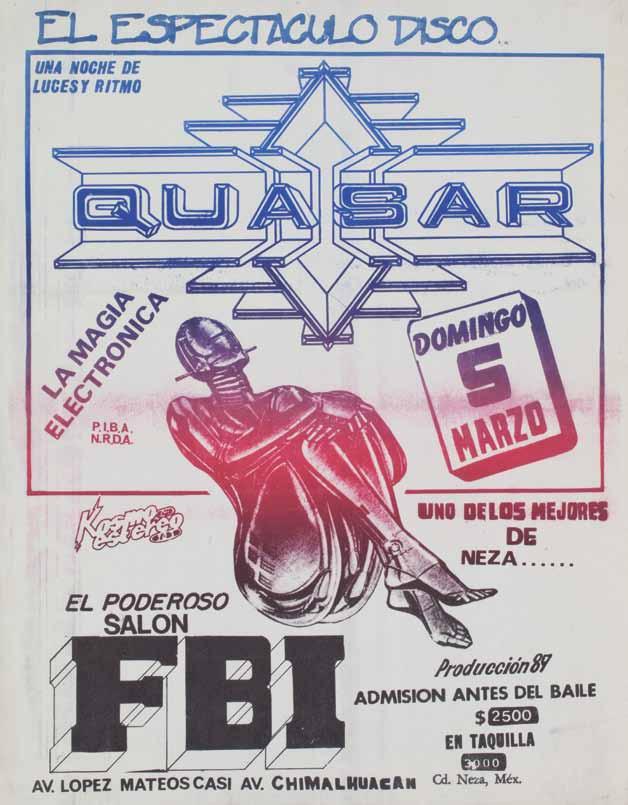
88
Quasar, Salon FBI, Mexico City Poster invite, 1989

89
Soundset, Mexico City Poster invite, 1989
ROTTe RdAm 1986 The ROOF IS On FIRe
by DUTCH GR aFFITI lIBR aRy
The summer of 2021 was approaching and an article about the Dutch Graffiti Library had just been published in an Amsterdam newspaper and online. The fact that this did not go unnoticed was evident from the reactions we received, which were positive, negative as well as critical. We did not expect that the article would literally stir things up and bring hidden stories back to life.
‘You have mail’
Peter van Wijngaarden sent the Dutch Graffiti Library the following e-mail:
“I had a graffiti done in the 80s by what I thought were promising graffiti artists at the time. The name on it is ERAS. It is hanging from the roof of my garden shed, and I decided not to take it down until there is interest. The graffiti was made on a 4 mm multiplex sheet attached to a wooden frame. The size is 1.25 x 2.50 meters. I suspect that it is one of the only remaining graffiti works from the early years of the then emerging graffiti culture in Rotterdam. At the time, I worked in a hip hop record store called ‘Streetsounds’ on the ‘b innenweg’ in Rotterdam. I organized the first hip hop festival in Rotterdam, where graffiti artists were able to put their graffiti on 20 wooden panels that we had placed at the entrance. However, things got out of hand completely and the complete building was sprayed up to 4 meters
high. Including a very nice picture of the Statue of Liberty in Ny”.
Peter’s e-mail caught our interest, so we got in touch. After e-mailing back and forth, we made an appointment and traveled to belgium to see the panel from the garden shed, which Peter described in his e-mail, with our own eyes. After a long drive we ended up in front of a house which was somewhat hidden between tall trees and large shrubs. That a garden shed is necessary to store all your herbicides seemed obvious, but it did not look like a place where we would find original Rotterdam graffiti heritage.
appearances are deceptive
After ringing the bell at the gate, a man of respectable age appeared and gave us access to his residence, accompanied by his dog. Together we walked into the garden, and indeed there was a graffiti panel placed in front of a garden shed. Peter explained that he took it off the roof, to make sure that we could see the details better. When we came closer to the shed, we saw a panel with an ERAS piece. This panel was unmistakably from the mid-80s, which was evident from the style, the use of color and the fill-in. We expressed our enthusiasm and continued our conversation inside. Then, over a cup of tea, another addition followed:

90
tHE rooF in tHE gardEn HousE

91 91
STREET SOUNDS. ONE NIGHT NEW YORK IN ROTTERDAM.
Poster by Peter van Wijngaarden. Collection Dutch Graffiti Library
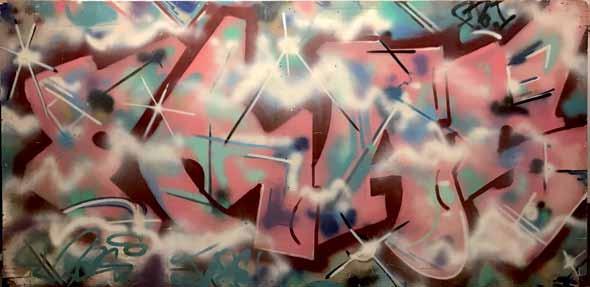

92
THE PANEL ON WOODEN FRAME. Eras, Rotterdam 1986. Collection Dutch Graffiti Library
WILD STYLE. SIZE 70 X 120 CM SPRAYPAINT ON PAPER. Rotterdam 1986. Collection Dutch Graffiti Library

“I have also found the original poster of the hip hop festival in Rotterdam in my attic. This festival is where this ERAS graffiti was made. The poster was spread across numerous places in 1986 where youth and culture were important. Furthermore, I found another graffiti piece from the same period. It is on paper, with a few tears left and right, but once it is placed in a frame you will not see much of that anymore. This piece was made by a group of Rotterdam locals of Surinamese descent, who brought it to the record store where I worked,” Peter said.
We talked extensively about youth culture in Rotterdam in the mid-80s, the experience of hip hop and the New york state of mind that characterized the city. The unique items that Peter handed over to the Dutch Graffiti Library illustrate, as far as we are concerned, a wonderful untold story of the underground.
street culture in the mid-80s
Peter van Wijngaarden continued his explanation about the graffiti piece on paper:
“At the time I was working in the hip-hop record store ‘Streetsounds’. One day in early 1986, a group of boys came in and asked if this graffiti could be hung on the wall of the record store. We promoted street culture in those days and were already doing a lot with hip-hop. The boys’ ‘WILD ST yLE’ graffiti was kept up for about a year, until the owner of the store got fed up with it. At the time there was also a lot
of writing on buildings in the street and people in the neighborhood sometimes complained about that. I took the graffiti with me and kept it in the attic all this time”.
Some inquiries suggest that this ‘WILD ST yLE’ piece was made by members of the ‘Crime Masters’: an infamous group of about 50 writers from Rotterdam in the mid-80s. On the back there are tags and names of Spyro, Jerry, Patty, CTC, MC J, Fritz.

93
Dutch Graffiti Library
ARENA. West Kruiskade 16, Rotterdam 1986
BACK SIDE OF THE WILD STYLE WITH MARKED NEW YORK CITY. Rotterdam 1986. Collection Dutch Graffiti Library
The duST y dOzen
by GUIllaUmE aka wIlDST ylE GUy
Opposites attract. In the previous episode of Hot Stuff magazine, I had the opportunity to write about the magnificent seven, a selection of 45s from my record collection. Now I’d like to visit the dark side of the groove with some songs that can’t fit on 7 inches. I’m talking about marathoners, musicians who jam til they can’t jam no more. I’m talking about tunes that run over 10 minutes… double digit, that is. The kind of music that’s rarely played from A to Z especially in this digital age where patience is no longer required. Here comes the long play, 12 inches for long-distance runners. How about a dozen of ‘em ? Make way for the dusty dozen.
Rare Earth - I Couldn’t Believe What Happened Last Night (12:10)
As 2023 marked the 50th anniversary of hip-hop culture, let’s remember those who paved the way. Originators like Grandmaster Flowers, Disco King Mario or new Rock & Roll Hall of Fame inductee Kool Herc. I once read that Clive « Kool Herc » Campbell’s favorite record was Get Ready by Rare Earth. WTF ?! A wild bunch of hairy rockers from the 60s, what a surprise for the naive b-boy I was. Get Ready is 21:30 long, so long it’s the only track on side 2 of the same-titled LP. Along the way don’t miss the bass/drum duo at 5:19 or Pete Rivera’s fierce drum solo at 17:08… and imagine Herc’s Merry-Go-Round banging the walls of 1520 Sedgwick Ave. A first short version of Get Ready was already recorded by Rare Earth on their 1968 debut album for Verve Records, but success came in 1969 with the long version from Get Ready LP released on Rare Earth Records… a Motown sub-label created by berry Gordy when he was recruiting white rock bands ! As a matter of fact, the title track was produced in 1966 by Smokey Robinson for The Temptations (Gordy Records, Tamla Motown). Should you have any doubt about the cult status
of this record, keep in mind that Kool DJ Herc’s own copy of Get Ready was sold in 2022 for USD 2,772 at Christie’s. As Rare Earth was definitely not a one-hit wonder, let me shine a light on the lesser known Couldn’t believe What Happened Last Night from their 1972 Willie Remembers LP. Enjoy the eargasm coming after 7 minutes… not sure who ever found out this break but big up to DJs like James Leacy, Siens or DJ ben aka b illy b rown who used to throw such b-boy sounds. Really miss those in battles today. yes hip-hop was built on funk and disco but rock music was a strong influence too. That’s just the sound of the 70s.

Iron Butterfly - In-A-Gadda-Da-Vida (17:05)
Can rock be funkier than funk itself ? InA-Gadda-Da-Vida is supposed to mean In The Garden Of Evil, rumor says that singer Doug Ingle was just too drunk to pronounce it correctly. It’s a 1968 piece of psychedelic rock that had a major influence on heavy metal… so heavy it was sampled and covered by many including Incredible bongo band whose famous version was in turn a source of inspiration for others, from Nas (Thief’s Theme,
94
Hip-Hop Is Dead) to bongo Rockers (Rock bongo System). These mysterious bongo Rockers from France actually cut a whole tribute LP to Michael Viner’s Incredible bongo band rightfully called… Incredible bongo Rock ! Not much data available for this Wygson release, even the date is unknown. Only fact, it’s mostly written by French trumpeter Claude Dauray… seems he was into classical, not the usual funky suspect so how did he come up with a crazy Moog version of Apache ? Well, if you look closer Dauray also went by the nickname Cliff Cardwin and was part of the studio band Abrax with Jean-Claude Pierric. These guys were basically French masters of library music in the early 70s, groovy library music like b lack Night with Daniel Janin (sampled by The beatnuts) or St-Michel bongo featuring percussionist Gilles Perrin (son of jazz singer Mimi Perrin from Les Double Six)… hmm could Perrin be the bongo player we hear on Rock bongo System ? better ask Sherlock Holmes. As Pierric told Le Parisien newspaper in 2002 : « We took hit songs from last month and played them our way, keeping exactly the same arrangement. but we placed two pieces of our own at the end of the compilation. » So I guess their cover of In-A-Gadda-Da-Vida was just business as usual. For a funky chunk of J-C Pierric, I advise you to start with the album Godchild released in 1975 by the French band of the same name on Les Tréteaux Records.

minutes of Rapper’s Delight as the year 1979 is jam-packed with « disco rap » releases (26 according to Discogs). Let’s dip dip dive in the catalogue of Enjoy Records and so-so-socialize with Grandmaster Flash & The Furious Five. The title says it all : Superappin’ ! First, there’s storytelling by Melle Mel, Cowboy, Kidd Creole, Rahiem and Mr. Ness aka Scorpio making five MCs sound like one : it was a party night everybody was breakin’… and it won’t be long till everybody knows we’re at a block party in the boogie Down b ronx of the 70s. Then, there’s the beat built around Seven Minutes of Funk by The Whole Darn Family. Flash is not listed in the credits but that doesn’t mean he was not involved… as a DJ he probably came up with the idea of Seven Minutes of Funk ? Just like label manager and record shop owner bobby Robinson is credited as producer although the rumor says this Doo-Wop veteran didn’t spend much time in the studio. but bob did sign Funky 4 + 1 and Flash & Furious before anybody else, probably with the help of his son Ronnie of Disco Four and his nephew Spoonie Gee. He also was the first to hire and trust multi-instrumentalist Errol « Pumpkin » bedward. His name first appeared in 1979 with the mention « Music by Pumpkin and friends » on Rapping And Rocking The House by Funky 4 + 1. Pumpkin was only 16 and could play all instruments but not all at the same time

No need to focus on the ultra popular 15
so he focused on drums. No matter how young he was, Pumpkin was the driving force behind the Enjoy sound from Harlem and also provided beats for Tuff City, Profile and CCL Records. Listen to Outlaw Four or Disco Four, Treacherous Three or
95
Grandmaster Flash & The Furious FiveSuperappin’ (12:03)
Fantasy Three, Spoonie Gee or Masterdon Committee… Pumpkin was more than a session musician but never got the proper credit he deserved, playing sometimes for a pair of sneakers or a fistful of dollars. He later learnt how to master drum machines and eventually started a solo career with King of the beat in 1983 (before Mantronix) plus Here Comes That beat in 1984 (with The Profile All-Stars). His name can’t be found in the credits of Superappin’ but according to one of his relatives, he did play on the first official GMF & F5 record (We Rap More Mellow by The younger Generation is also from 1979 but that’s Furious 5 without Flash). Can’t be sure so put the needle on the record, hear the drummer get wicked and make your own judgement. As ATCQ used to say « record company people are shady » so let’s not put too much weight on official credits. It’s a fact that Pumpkin helped forge the hip-hop sound of the early days and with or without a crown, he should be considered as a true king of the beat. Rest in beats !
Shawn Phillips - I Don’t Want To Leave You, I Just Came To Say Good-Bye (16:08)
When I’m on the road with my wife and kids, it’s playlist time and battle zone ! b illie Eilish vs b illie Holiday, sort of. b illie Jeans claims that I am the one and b illy Paul can tell everybody that this is your song… yours, mine, theirs… to each their own ! Sometimes we f ind a common ground like I Don’t Want To Leave you, I Just Came To Say Good- bye. That’s a long weird name for a long instrumental trip to the stars. American singer and guitarist Shawn Phillips can’t be limited to the folk genre he’s known for. Don’t let Spaced, his 1977 jazz-funk UFO, fly under your radar. Catchy 12-string guitar and killer drums on this atmospheric gem. It comes as no surprise as the drummer is Mike Clark of The Headhunters, who performed on God Make Me Funky that Grandmaster Flash is cutting in the kitchen scene of the movie Wild Style (followed by bob James’ Mardi Gras in the OG version). Even better, two other Headhunters joined the party, b ill Summers on percussion and Paul Jackson on bass… in other words, it’s kind of like Shawn Phillips & The Headhunters ! If that doesn’t sound cool enough, please note that Summers and Jackson were also part of The Herbie Hancock Group, they play-
ed on Herbie’s legendary Head Hunters LP in 1973 (with Harvey Mason on drums). If you want more just listen to Prelude To A Leaving with the same line-up. This dream team was actually on Shawn’s previous album but my sensors can’t detect any intergalactic magic on this prequel.
Michael Shrieve ft. Kevin Shrieve & Klaus Schulze - Transfer Station Blue (11:57) American drummer Michael Schrieve is a founding member of the band Santana, he played on classics like Soul Sacrifice and became a drum legend after his powerful solo at the 1969 Woodstock festival. He worked in the 80s with The Rolling Stones and produced electronic music with the help of German synth pioneer Klaus Schulze. Klaus used to be the drummer of Tangerine Dream before he went solo and fell for early analog synthesizers like the EMS VCS3 (check the intro to The Alan Parsons Project’s I Robot). Equipped with a helmet and surrounded by keyboards, he looked like a proto Daft Punk or a mad scientist and did record countless albums of ambient and experimental music. At f irst Transfer Station b lue sounds very sci-fi in the vein of b lade Runner or George Orwell’s 1984, perhaps because this same-titled LP was actually released in 1984 and influenced by Ridley Scott’s commercial for Apple at the 1984 Super bowl ? Definitely maybe. Then the melody suddenly changes for a balearic mood that reminds me somehow of Chris Rea’s Josephine (French edit), thanks to brother Kevin Schrieve on guitar. It’s cold blue and rainy, then it suddenly gets red hot and bright… chances are that we’re going to see a rainbow.

96

97
Missus Beastly - Space Guerrilla (10:50)
Speaking of b lade Runner, Roy batty’s monologue « I’ve seen things you people wouldn’t believe » brings me to All Eye Seeing produced in 1999 by buckwild for Andre the Giant of Showbiz & AG. buckwild is a beat maker from the b ronx, member of DITC with Lord Finesse, Diamond D, b ig L, Fat Joe, OC, Show & AG… imagine such hall of fame diggin’ in the crates of your local record shop ! He’s produced many boom bap classics in the 90s including OC’s born 2 Live where the use of Keni burke’s Risin’ To The Top is imho even better than Pete Rock’s Take you There (both from 1994). Missus beastly is one of the first psychedelic / jazz-rock bands from Germany, the collective goes back to 1968 with a line up that constantly changed over the years. Space Guerilla (1978) is their last official LP as members finally broke up and even got their name stolen by a concert promoter who kept releasing fake Missus beastly records (with future drummer of Scorpions), pretending the band still existed ! Just can’t get enough of Space Guerilla’s introduction but the whole song is a crazy rollercoaster of fusion, jazz-rock, krautrock, progressive… call it what you want but this kind of musicians, you just can’t trap in a cage. If it wasn’t for sampling these moments might be lost in time, like tears in the rain I guess.
Funkadelic - (Not Just) Knee Deep (15:23)
When it comes to endurance, you can count on Parliament and Funkadelic. Knee Deep (1979) is not just a song about a girl, it’s a manifesto for funk in the disco era. The kind of music everybody’s heard… but not in its director’s cut. Most people sleep on Michael « Kidd Funka -

delic » Hampton’s solo, yet he’s a guitar hero who’s performed Maggot b rain live on stage more often than Eddie Hazel himself. bought my first two rap records simultaneously in 1989 : LL’s Walking With A Panther and De La’s 3 Feet High And Rising, had no idea that both Nitro and Me

98

Myself & I were children of the P-Funk. Just like James b rown, George Clinton was an incredible talent scout… but one wanted military discipline (5 to 10 dollar fines for wrong notes or unshined shoes) while the other used to let people play and dress freely. So eventually brothers bootsy & Catfish Collins, Maceo Parker and Fred Wesley left the Godfather of Soul for Dr. Funkenstein, bringing in their luggage « The One » (accentuation of the first beat of every measure). Singer and multi-instrumentalist Walter « Junie » Morrison is the mastermind behind Knee Deep, he left Ohio Players in 1974 (Funky Worm, that’s him), launched a solo career (check Suzie Super Groupie) and joined the P-Funk all stars in 1977 (for Motor booty Affair and One Nation Under A Groove). As told by Junie to Red bull Music Academy: « I created Knee Deep using a drum machine, Fender Rhodes, Steinway Grand, Mini-Moog for the lead and bass lines and a Gibson L6S for my jazzy guitar solo. bootsy Collins added his drums at a later date. In fact, bootsy was also the drummer on One Nation Under A Groove. Michael Hampton added his monumental guitar solo to the Knee Deep mix some time later, as well. Although bernie Worrell is a phenomenal musician, contrary to popular belief, he did not perform on (Not Just) Knee Deep. » Add vocals by George Clinton, Junie Morrison, Garry « Diaper Man » Shider, Jessica Cleaves (from Earth, Wind & Fire, Raw Silk…) plus Philippé Wynne (from The Spinners)… now I got ants in my pants and I need to dance !
Super Funk Special - Lord Funk (20:55)
Welcome to belgium, land of beer and chocolate and funk ! Here’s a studio project whose name varies from Super Funk Special to Super Funky Discotheque or even Lord Funk. Lord Funk is actually the title of this hot and sweaty track produced in 1972 by Sylvain Vanholme of Wallace Collection (famous for its often sampled/ covered Daydream), written by fellow belgian musicians Ralph benatar and François Weyer with American trumpeter Douglas Lucas. benatar, Weyer and Lucas would later be part of a funk/soul group combining belgians and US citizens settled in belgium, The Soul Sensation Orchestra better known as SSO. you’ve probably heard their 1976 Give a Damn LP on RKM featuring Faded

99
99
Lady and Right Here Right Now, straight masterpieces ! No matter the name SSO
Junie Morrison
or Super Funk Special, there were actually many talents mingling with each other behind local bands like El Chicles, Chicken Curry, The Sumos, Plus, JJ band… that’s the belgian connection ! Some of these session musicians even helped Nico Gomez aka Josef van het Groenewoud & b ill Ador aka Willy Albimor revamp Chakachas, who reached no. 8 on the US b illboard Hot 100 in 1972 with Jungle Fever. A rumor says that most of the SSO team later played on Patrick Hernandez’s smash hit born To be Alive. Last but not least, François Weyer was also involved in the legendary belgian jazz-funk ensemble Placebo lead by the late great Marc Moulin. yes it’s a small world, and a small country.

Stetsasonic - Talkin’ All That Jazz (Dim’s Respect For The Old School) (10:01) Well here’s how it started, heard you on the radio… wow this song is such an ode to the art of sampling, both by its lyrics addressed to jazz musician James Mtume (« sayin’ all that crap about how we sample ») and its elements borrowed from Lonnie Liston Smith’s Expansions (and ironically Mtume’s Juicy Fruit too). It takes balls to remix such a classic but the song says it all : « Tell the truth James b rown was old ’til Eric & Rakim came out with I Got Soul, rap brings back old R&b and if we would not people could’ve forgot. » And that’s exactly what DJ Dimitri From Paris did with a French touch, he introduced the hip hop band to a whole new generation of clubbers. A bold crossover delivered by Dim and session musicians including percussionist Marc Chantereau who played in the 70s with Voyage (Latin Odyssey), Crystal Glass (Crystal World), Don Ray
(Got To Have Loving), Christian Gaubert (Sweet Maryline)… what a CV ! As both the 88 OG and the 98 remix have a strong b side, check Domenico Torti’s bonus b reaks & Edits for a b-boy extravaganza. by the way, the first remix to blew my mind was
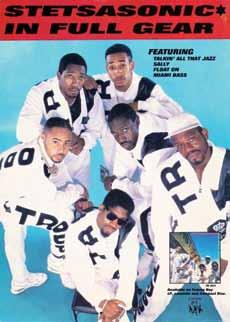
Denniz Pop’s 1989 edit of b illie Jean (from SweMix, the Remixed Records series out of Sweden)… in my local nightclub La Ferme b lanche the DJ used to play it from beginning to end, this and ben Liebrand’s Dance Classics (The Mix) were like the soundtrack of my teenage Saturday nights. After that I was hooked on remixes, probably in search of a funkier version of my youth ! Now should you have any doubt about DFP’s ability to make you dance, check illico presto disco his respectful homages to the Chic Organization or mixes like Super Disco Friends (with DJ Muro).
MFSB - Love Is The Message (A Tom Moulton Mix) (11:28)
MSFb (also known as The Family) stands for Mother Father Sister b rother, unless it means Mother F*cking Son of a b itch ? One thing is for sure, this Philly outfit led by producers Gamble & Huff and Thom bell will be remembered for disco anthems like TSOP (theme from Soul Train) or Love Is The Message. Well it’s not the 1973 album version of Love Is The Message that should be most remembered but its 1977 extended remix
100

by Tom Moulton. Can’t talk about remixes without Tom Moulton of course, he’s considered as the inventor of both the remix and the 12’’ single as we know it today… what a legacy ! It’s because Tom ran out of blank 7’’ vinyls in 1974 that he pressed 12’’ traditionally used for LP’s, the surface allowed wider grooves for a better experience and longer mixes for instrumental breaks (piss breaks too). As mentioned in RollingStone: « When Philadelphia International’s co-founder Kenny Gamble enjoined Tom Moulton to remix the label’s back catalog for the Philadelphia Classics double lP, he was confused that Moulton wanted to include Love Is the Message, an album track. “It wasn’t a hit” Gamble protested. but Moulton insisted and then turned it into the ultimate in disco opulence, the theme song for David Mancuso’s foundational NyC disco, the Loft. “It’s just one of those great, great songs, and I don’t think you could tell it all in three minutes, that’s why it’s 11 minutes, because I think it’s classical, symphonic. It has everything that you want in a song” said Moulton. » One thing leads to another, my favorite version of Love Is The Message is the 1987 remix by Danny Krivit aka Mr. K… it’s actually based on Tom Moulton’s edit and Salsoul Orchestra’s Ooh
I Love It (Love b reak)… that itself borrows from the Moulton mix, which is not surprising as Salsoul Orchestra was founded by former MFSb members like Vince Montana. Full circle.
Rammellzee & K-Rob - Beat Bop (10:10)
I usually try to buy original records but sometimes a repress is just fine. Thanks to its dope artwork, the first pressing of beat bop released in 1983 by Jean-Michel basquiat on his own label Tartown Records has now

101 101
become one of the most expensive records, the kind of prized possession only few can afford… USD 126,000 at Sotheby’s in 2020 ! For the 50th anniversary of hiphop culture, the basquiat estate recently sold 50 of the 500 test pressings from JeanMichel’s personal collection at the price of USD 4,000 each for fundraising charities. Not only did JMb design the cover but he also produced and arranged the beat, having Rammellzee and 15-year-old K-Rob control the mic for 10 minutes non-stop. As told by Glenn O’b rien: « basquiat loved music. He DJ’d a lot, he used to DJ at Area, the club. He listened to music all the time. If you went over to the studio, there was always a record playing. So I think he was… interested. His band Gray was really an interesting band, even though they weren’t real musicians, they had this great musical sensibility, and I think that, in a way, beat bop has a bit of that Gray sound to it, that sort of dub-space thing, a lot of space in the music, a lot of echo. » basquiat is big but he’s not the only legend right here. The enigmatic visual artist Rammellzee, whose real name remains uncertain, used to rock both the mic and the spray can. He was immortalized in Wild Style, Downtown 81, Jim Jarmusch’s Stranger Than Paradise… and even portrayed by basquiat on his painting Hollywood Africans (next to Jean himself and graff pioneer Toxic). I love when artists get out of their comfort zone, when writers become breakers or MCs turn into DJs… reminds me of the early days of hip-hop when all elements were like one for all and all for one, makes me want to re-watch Style Wars !
Andre 3000 - I Swear, I Really Wanted To Make A “Rap” Album But This Is Literally The Way The Wind Blew Me This Time (12:20)
Far from Outkast and far from today’s music standard, the new Andre 3000 comes with a f lute instead of a mic and 6 tracks out of 8 running over 10 minutes. As advertised, no bars no beats no vocals. Definitely not what we were expecting in 2023 but I guess everybody needs a breath of fresh air at some point. ATLienness, midlife crisis or just a different self in a different time ? Is Andre benjamin too eccentric or simply free as a bird ? Some love it some hate
it and we all talk about it. Talk less, listen more… enjoy the reverie ! before the internet I used to read Ralph Tee’s book Who’s Who In Soul Music (1991), in the foreword Damon Rochefort wrote : « The music business has always been very fond of pigeonholing its product: b lack, Dance, Pop, Rap, Rock, Alternative, Country, Soul. Such tags make marketing the product more straightforward, but from the artists’ point of view are simply restrictions they would rather live without. What do you call the end result when a black songwriter composes a soul song for a C&W crooner, as Lionel Richie did with Lady for Kenny Rogers ? What happens when a white, former teeny artist tops the black chart, as George Michael and Lisa Stansfield have both done with some panache in the States ? » So how do you sort your record collection ? And where would sit your copy of New b lue Sun 3LP ?
Listening to this whole D12 would cost 160 minutes of your time, that’s too expensive and would only result in bleeding ears. Pick only one of these songs, or any other song that you like, and get the most out of it. Who cares if it’s short or long… size matters not, says yoda. It doesn’t really matter, says Zapp. but if it’s a lengthy one, just don’t pull out the plug like you wouldn’t want to leave in the middle of a concert. And I know how tempting it can be to skip to the next fat beat, but can’t we slow it down sometimes and enjoy the ride ? In the days of cassette tapes, it was not

102
user-friendly to RWD or FFW. So after a few listenings we often knew what song was coming after the other, like a routine. Now we don’t have to touch anything to satisfy our appetite, we talk and whatever song of our choice starts immediately. Thanks to artificial intelligence, we don’t even need to chose anymore as we get rhythm by algorithm. Perhaps we’ll end up listening to virtual rappers generated by AI ? Unless we all get brainwashed by Taylor so Swiftonomics can save the world ? The Fatback band would ask « Is this the future ? » yeah I probably sound like an old school fool but truth is I wouldn’t trade my smartphone for a boombox or a jukebox… we may glorify the past but we live for today.
According to data analysts of UCLA, the average length of a song in 2020 was 3:17 which is more than 3:15 in 1930 but less than 4:03 in 1970 or 4:19 in 1990. Here’s a theory from statista.com : « Researchers speculate that the attention span of music listeners has decreased over the years, with so many different entertainment avenues readily available for consumption. With users skipping through tracks more on their preferred streaming services, the underlying algorithms could instead promote shorter tracks that are listened to in full to keep their audience engaged, recommending them to more listeners and therefore setting a precedent of what constitutes a successful song. » In 2023, the average was down to 3:15… will 2024 be under ?
Just like silent movies became talkies, music follows technology. We don’t make music as we used to because we don’t listen to music as we used to… or is it the other way around ? Songs get shorter, as short as they used to be in the 50s when 7’’ records became popular and changed the game. Maybe that’s for the best as 2:30 is enough to tell a story and won’t stop master blasters from jammin’ on the side. The third verse has gone missing but some recipes
remain the same. Hitmakers bernard Edwards & Nile Rodgers already knew since the 70s how to get our attention right away by delivering the hook first. Artists looking for million streams must often reach their target audience within the first notes, otherwise they don’t get played and they don’t get paid (a little for streams but a lot for concerts). Then they get out of playlists and small talks… until a TikTok video brings them back to life years later. That’s alright but must all songs eventually be reduced to 30 seconds on social medias ?
We wave our hands in the air like we just don’t care but extended versions are now endangered species. When a shortened cut is the only official version available on streaming platforms and we have to search youTube in hope that some aficionado has uploaded a rip of the full song… something’s off. Something’s lost to posterity, like the original recording of (Not Just) Knee Deep that’s nowhere to be found on Spotify. Vinyl records don’t always make sense either, go figure out why Transfer Station b lue was amputated on its 12’’ release ? yes we do need shorter edits for radio or commercial use. yes History has a selective memory. And yes the real deal is physical, but when we’re on the move we go digital. Plus, for my kids like for most kids today, if music is not digital it’s just not music… it’s an artifact. Hopefully there will always be curious new listeners to discover the history beyond the Instagram story, reel to real I guess. So let’s chill and trust the younger generation.
Now it’s your turn, chose your own dozen records. Make it lengthy, shorty, dusty or dirty but make it funky, in its full original glory… just do it like Shannon and barry, let the music play.
Guillaume aka Wildstyle Guy IG : wildstyleguy_collection
103
meGA ReCORd & Cd FAIR den BOSCh
pRe SenTed By ReCORdpl AneT
This bi-annual record fair in the b rabanthallen in ‘s-Hertogenbosch, The Netherlands (previously in Utrecht) is without doubt the largest record music fair in the world.
58th Mega Record & CD Fair April 13 & 14, 2024 b rabanthallen in ’s-Hertogenbosch.
The first editions were held in the Jaap Edenhal in Amsterdam were i always went for hunting records. Later they moved to Utrecht and grew big in space. Now they found their new home in ’s Hertogenbosch. The previous Mega Record & CD Fair was a real treat ! It is a top location and easy to reach, parking close by and lots of space between the stands. I did also a big Disco exposition last november.
In april you can expect: An impressive exhibition of the Stax Label awaits you, along with the extensive Kiss collection from the private collection of the Swede Alexander Johansson. Manuel Decker from France will present and sign his book ’Record Art Covers’, accompanied by an exhibition featuring the most iconic artistic album covers. Charly Records celebrates its 50th anniversary and brings Ronnie Leatherman from ’The 13th Floor Elevators’. Additionally, there will be an auction by Omega Auctions UK.
but RecordPlanet is more than just the biggest record fair in the world. It’s a place where people meet, connect and share their love and passion for music and vinyl, we feature exhibitions, autograph and listening sessions, book presentations and live performances.
Pictures taken by Pierre banoori
Recordplanet dates 2024
• August 25, 2024
Record & CD Fair Hoorn
• September 28 & 29, 2024
Haarlem Vinyl Festival
• October 5, 2024
Record & CD Fair Rotterdam Ahoy
• November 9 & 10, 2024
59th Mega Record & CD Fair
b rabanthallen ’s-Hertogenbosch
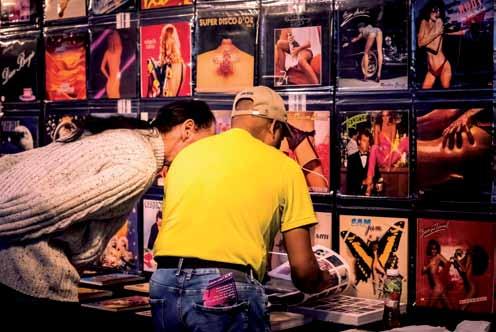





105
STA x
COvER ARt
At the 58th Mega Record & CD Fair April 13 & 14 b rabanthallen in ’s-Hertogenbosch is presented a STA x E xPO, courtesy of the renown Marc Janssen SOUL & FUNK Music Archives. For over 40 years, Marc Janssen, a prolific record collector, has amassed one of the most comprehensive & exhaustive LP collection of the 60’s, 70’s & 80’s R&b and soul Music.
STA x is inarguably one of the most popular and influential music record labels of all time. The Unique gritty, raw and earthy STA x sound, has made a lasting impact
on popular music, continuing to inspire and help shape contemporary popular music, even today, across various musical genres. In the 60’s & 70’s STA x records was a R&b powerhouse which also created the southern soul and Memphis soul music, also launching the careers of many legendary musical artists including Otis Redding, Sam & Dave, Rufus & Carla Thomas, booker T. & the MGs, and numerous others.
The Expo features a complete overview of original, first pressing album art

106


107




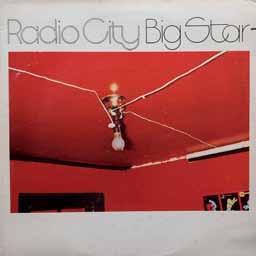

108
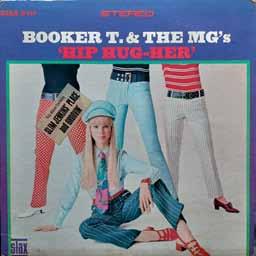
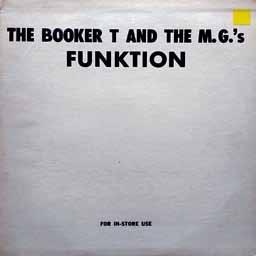




109



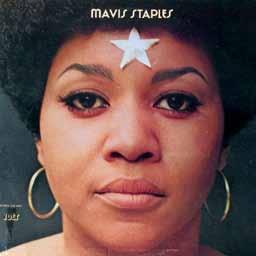


110






111
Mizell Brothers’ Brilliance
wRITEN By maRCUS PaTT y aND ENHaNCED
By NIEl S HOEk E
BROUGHT TO yOU By FaCTS ON wax
During the 70’s, the Mizell Brothers were one of the most influential and revolutionary producers in the world of Jazz-Funk. yet their names remain unbeknownst to many. i n those days producers rarely stepped foot into the limelight, unlike nowadays.
If I look at the influence the two siblings had on me personally, it’s down right tremendous. They actually introduced me to the fusion side of Jazz. In 2003 I bought “Gears” by Johnny ‘Hammond’ Smith from a friend. Shortly before I had heard the song “Los Conquistadores Chocolates” in a David Macuso mix and was quite impressed. After having devoured the album from start to finish, a new musical wormhole emerged.
Never had I heard such refined Jazz with perfectly complimenting elements of Funk and R&b. Needless to say, the impact of “Gears” made me want to discover more about their other work and until this day I come across new songs that they produced.

How it all began
Fonce Mizell and Larry Mizell are two brothers, born in Harlem, New york. Thanks to both parents (including several other family members), the duo grew up in a musi -
cal environment. Not only did their family play instruments, some of them had also released music. So naturally they were motivated and perhaps encouraged to play musical instruments themselves. In Junior high they learned to play instruments such as the trumpet and the piano. When the brothers were in their teens, the Mizell family moved to Englewood, New Jersey. A new chapter had begun. Together with classmate Freddie Perren, they would start their first band named ‘The Nikkons’. Doo-Wop was the genre they would mostly play, since it was quite popular at that time. After the two brothers (and Freddie Perren) graduated high school, the three of them started their freshman year at Howard University. Howard was one of the few schools that accepted African-American students and was also known as the ‘black Harvard’. Fonce enrolled into the department of music and ended up in d onald byrd’s classroom. This would be a pivotal moment and would shape both artists careers.
While in college, the brothers formed a new band ‘The Vanlords’, with Freddie Perrin and Jerry butler. They would enter talent shows and at times compete with the likes of artists such as Donny Hathaway. Interestingly, both brothers began using their vocal talents from time to time at these shows. Something they would keep doing from that point on. The dusty Doo-Wop from the 50’s, made way for refreshing Jazz in the 60’s. This transition would help lay the foundation for their successful career.
Early production steps
Music production had been a path that the Mizell brothers had been walking eversince their college years. While attending Howard University they founded their first production company and brought together fellow music students. Under the name ‘The Moments’ they
112
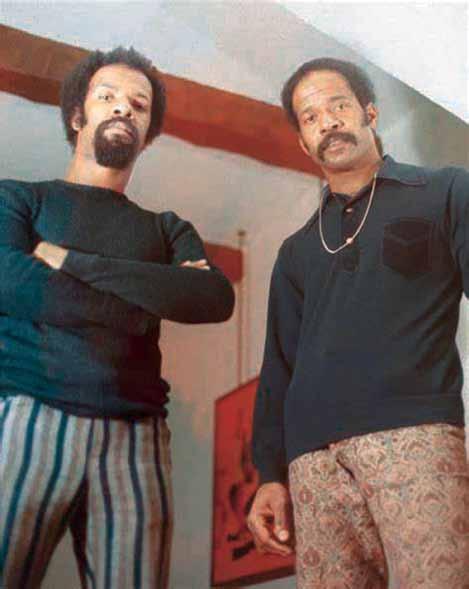
would release their first record on their very own Hog label. Unfortunately the record flopped and the siblings decided to hand out some of the unsold stock to radio DJ’s. At least this way they could get some exposure out of it.
Whichever way the dice had rolled, the first steps in music production had been made. b ringing together the right musicians and guiding them during the recording process, would later become second nature as well as their strength.
While Larry graduated in engineering and would end up working on the Apollo Program for NASA, Fonce’s career would
take an interesting turn. Together with Freddie Perren, he would become a member of Motown’s ‘The Cooperation’. This was a group of producers and writers, put together by label owner berry Gordy himself.
This super group functioned between 1969 and 1971 and was put together to write hit records for the, newly discovered, band ‘The Jackson 5’. With hits such as “I Want you back” and “AbC”, one could say The Cooperation managed to do a great job. I never knew Fonce had written for multiple Jackson 5 albums, but since his name was never credited under Fonce Mizell, it makes sense.
113
Sky High Productions
Motown traded in gloomy Detroit, for sunny Los Angeles and soon after Fonce, Larry decided to make the move as well. The brothers set up shop in the Hollywood Hills, where they had a recording studio at their disposal. Making music had become a full time job for both brothers now, which wasn’t the case before they moved to Los Angeles.
Not only did writing for Motown have a huge impact on them, so did learning about certain studio recording techniques. you could say Motown helped shape the Mizell brothers quite a bit. Since Larry was now also working for Motown, the two would be working together a lot. One of the projects the brothers worked on was Marvin Gaye’s “you’re The Man” album. It was intended to follow

up “What’s Going On”, but due to a difference of opinion between Marvin Gaye and berry Gordy, the project was shelved. I was thought to be lost forever, until it was finally released in 2019.

One of two tracks the Mizell brothers had produced for that project was “Where Are We Going”. Since it would not be released, it was used for Donald byrd’s “b lack byrd” album in 1973. This would be the first release under the name ‘Sky High Productions’, but certainly not the last! As

fate would have it, “b lack byrd” would become b lue Note’s best selling album ever and thus their success was solidified. From that moment on Sky High Productions would indeed go sky high.
It was the beginning of a fruitful series of collaborations with mentor Donald byrd. The Mizell brothers were asked to produce four more albums of b lue Note. Two of which for Donald byrd as you might have guessed. both “Places And Spaces” and “Steppin’ Into Tomorrow” are considered Jazz-Funk masterpieces. The other two albums were bobbi Humphrey’s “b lacks And b lues” and “Fancy Dancer”. Their work on

114
b lue Note made the brothers sought after by other Jazz labels, who were looking for that specific fusion with Funk and Soul. A
few examples being “Gears” for Johnny “Hammond” Smith and Gary bartz’s “Music Is My Sanctuary”. The sound of the Mizell brothers was avant-garde and put Sky High Productions on the map.
What characterizes the Mizell sound?
So what exactly defines the sound of the Mizell brothers? In my opinion it’s due to the way their productions are arranged. The instrumentation and layering of sound stand out for me. In Jazz-Funk music, it’s not so much about solo instruments, but each single instrument adds to the grand total. The bigger picture if you will.
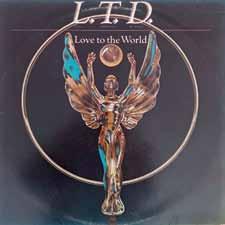
Very important to the Mizell formula was the steady use of talented studio musicians. It’s no secret that Harvey Mason played on countless Mizell productions. My Facts On Wax colleague was playing a DJ set before a ‘Fourplay’ (bob James, Harvey Mason & Lee Ritenour) performance at the North Sea Jazz Club in 2012. While he played “Why Can’t We Smile” by Johnny Hammond, his Moovmnt buddy was chatting with Harvey Mason at the bar. They walked towards the DJ booth and while introducing himself, sir Mason asked which song was playing. Followed by “this is me on drums right?”
Their fusion sound also has a certain groove to it, which makes it more accessible to a bigger audience than just the die hard Jazz enthusiast. The use of synthesizers, for example the ARP, was used to replace a string section. These were quite costly and easily replaced with the help of modern technology. In “Los Conquistadores Chocolates” they used wind effect sounds, which also added to that distinctive sound. Another thing that defined their sound was the use of their own voices. Incorporating their vocals would
add yet another layer to their work.
Their impact
I’ve always been a fan of refreshing and innovative music. Artists like Miles Davis and J Dilla are pioneers in my eyes (or should I say ears). The Mizell brothers are pioneers in their own right. So it makes sense that Jay Dee would at point in time sample “Think Twice” or that Erykah badu would find some inspiration in “Why Can’t We Smile” on her song “Time’s A Wastin”. These are just a few examples of a younger generation paying homage to geniuses that are the Mizell brothers. Not only did they carve out a unique space in Jazz-Funk, they also became successful doing so. Making Jazz sound more approachable for the masses. Inspiring not just musicians from the same era, but inspiring generations to come.

When I started writing this piece, I realized little information is available about the Mizell brothers. On their website I found some useful information, but most of what I was looking for comes from the Red bull Music Academy lecture recorded in Melbourne in 2006. I heard about an article in Wax Poetics, but sadly I could not get my hands on this.
Written by Marcus Patty (Facts On Wax)
Translated by Niels Hoeke (Facts On Wax)
Sources:
Red bull Music Academy 2006: Mizell b rothers talk Disco soul, Motown and Sound Factory.
Marc Mac & Dego (4hero) b lack History Month Mizell b rothers Mix on Mixcloud.
115
hOTmOlTenl AvA
by lU/lU and lyma
LU/LU & LyMA is a project by Lucas van Ee and Tjerk Lammers. Collaborateurs extraordinaire. I’ve seen them work and move as one in their common studio. b rothers speaking in code and working in unison. A hive mind full of muscial ideas and creativity bound to erupt like a Vulcano. I’ve worked with both seperatly and I am just blown away, how in tune with the music these guys are. They are not just producers but they are music. Happy to introduce their 6 Track EP HOTMOLTENLAVA to the world as the first Lumberjacks in Hell release in 2,5 years, after Covid, having two kids and building a studio at home. Get ready to get reintroduced to what made Lumberjacks always a great source of left field club tunes and what kind of sound we are going to push forward for the next chapter.
- Marcel Vogel
How did you guys meet? Please introduce yourself!
LU/LU doesn’t remember when we first met, though I think it was pretty special… It was underneath a tree during a thunderstorm. We were both playing a gig with our bands at some hip barbecue thing in Amsterdam and LU/LU ended up joining my band with his saxophone, when the rain started poring down. Water flying off the drums with every hit and all the people pushed underneath the tree for shelter. Lightning flashing in the background, hallelujah, but LU/LU doesn’t remember a thing because he used to smoked too much.
After that we reconnected during a random event where we both had to work and I ended up sending LU/LU some of my demo’s after that. He helped me put out my first solo EP and we’ve been like two sides of the same coin ever since.
How do you work together?
We actually share a studio and we have been making music together for more than 6 years. I guess the process of each track is different but we usually sent each other demo’s and then try to take them to the next level. And then we finish them together in the studio. Looking for the right sounds and textures to make the initial ideas come to life.
What other projects do you work on?
We have been releasing music together under our LIKEMINDS project which is
more focussed on the songwriting. Although we also do some uptempo stuff there it probably lives somewhere in the soul/pop/disco/beat-tape realm. Next to that we both have some other things going on.
LyMA: Is currently has a solo EP in the works and also an EP with Marcel Vogel. LU/LU: Produces a lot of soulful songs for artists under the name Rebiere.
Whats the story of the EP?
Hotmoltonlava is a collection of tracks that erupted out of our love for house music. We’ve been creating lots of music together but these tracks come from a different place. A dark, drunk, sexy and sweaty world. Tracks we make to balance the rest of our output.

116


117
vIntAGE ARtIClE le ROy h uTSOn
by Peter lewis
Interview from Groove Weekly magazine issue 97 by Peter Lewis 11 September 1982
Peter Lewis was very pleased to have been able to track Leroy Hutson down one morning in the windy city of Chicago in 1982.
Peter Lewis: your new album is the first product we’ve heard from you in quite a while. What’s been the reason for your seemingly long absence from the music scene?
Leroy Hutson: It was mainly due to economics here such as they are. It’s taken a while for me to negotiate a new label deal. My contract with Curtom ended in December’79, I started negotiating with Dick Griffey in February 1980, and that took a while to finalise. I’m signed to his production company.
Peter: The single “She’s Got It” is certainly an unusual release. Can you explain the concept behind it?
Leroy: Pure fun really - the purpose was to come up with a party record. The vocal sound effects were struck upon in the studio. After we got the electronic sound effect on the lead character, we thought we’d make it further fun by putting in the sound effects and then we came up with the party idea .
Peter: Is your new album “Paradise” indicative of where you’re at musically today?
Leroy: yes, the album is still me and my music. but it wasn’t meant to be a concept album. The songs were specially picked out to be recorded - but they were done in several different places to make the album. The material was not really my decision - I’m assigned to Mr. Griffey’s production company, and he had creative control. but I do think it’s good music
- I’m particularly partial to “Nice & Easy” and the title track, which is getting quite a bit of play here. “Stay At It” is also a special track to me.
Peter: Aside from being a singer, you are also an accomplished producer, composer and instrumentalist. Which of these aspects of your career do you consider the most important?
Leroy: I consider the production the most important - that’s my main thrust, though at the moment I’m very much a performer first and foremost.
Peter: Are you presently getting involved in much outside production work or songwriting?
Leroy: I’m presently involved in coming up with some songs for the next Whispers album.
Peter: Would you consider working again witht he Impressions as writer or producer?
Leroy: yes, without a doubt. I’d love to do that, but so far I’ve not been approached However should the opportunity arise I would love to, yes.
Peter: Of course Curtis Mayfield produced and wrote your first sides with the Impressions. Do you feel you learnt a lot from him and would you like to work with him again?
Leroy: yes of course I would definitely like to work with him again, though Curtis and I actually spent very little time together creatively. We didn’t do a lot of work together personally either.
118




119
Peter: How do you feel your music in 1982 differs from your music in the seventies?
Leroy: I think the main difference can be seen lyrically - I feel I’ve lightened up a bit in the subject matter.
Peter: Are you disappointed with the way your career has gone to date? A lot of people in the music business regard you as a highly talented and creative musician, yet you’ve never really had that big hit record.
Leroy: Well, I think a lack of hit records makes me want to strive that much more for success. I mean, I won’t allow myself to get frantic about it because I’m a firm believer in manifest destiny. I firmly believe that when my time comes to hit, then I’ll hit.
Peter: Do you regard your new set for Elektra as the beginning of a new phase in your career?
Leroy: yeah, without a doubt. Sometimes an artist must leave and go to another company to bring them foreward. This is my first company outside of Curtom, and though we’re still involved with the same personality, it definitely marks a new beginning in my career.
Peter: “She’s Got It” is very popular in the london discos at the moment and this has focussed a lot of attention on your new album - with “Paradise” and “Classy Lady” also getting a certain amount of play here. How do you feel about this?

Leroy: “She’s Got It” … big in London? I’m flabergasted ! Of course I’m very glad to hear that - I didn’t know! That’s absolutely great! you’ve made my day!
Peter: back in the sixties, the Chicago scene was one of the most flourishing in the USA -there was a very definite ‘Chicago Sound’, as typified by The Chi-Lites, Major Lance, The Impressions, The Stairsteps, Curtis mayfield, Gene Chandler and yourself etc. We don’t seem to hear much of the Chicago sound these days - although I’m aware the Chi-Lites are enjoying something of a rejuvenation. What’s the Soul music scene like in Chicago these days?
Leroy: It’s not very prominent. but then that’s not just the case with Chicago alone, it’s true of many other towns in the States – all due to the recession. Jerry butler’s just started up his new independant ‘Fountain’ label here, with himself and his group Omni. Carl Davis has got his Ch-Sound label here, I think he’s trying to get distribution at the moment. but, apart from that, there’s very little happening. The scene here was once flourishing, but nowadays thay just can’t get the contracts and therefore the breaks.
And on that note we finished our conversation, although his final message was “you tell everyone not to analyse ‘ she’s got i t’ too much - just enjoy it!”
120

121
COve R ARTIST KAnO AKA Re AKT
“This Hot Stuff cover was a great chance to dive right back to the 80s with a completely analog illustration - the kind we used to do in our black books for hours on end whilst under the influence, in a time when computers were only good for playing the most cutting edge games, made with giant pixels and 8 bit music scores”.
- Kano AKA Reakt
In the pre-internet age, the way in which modern cultures spread throughout the world was almost always influenced by geography and the limits of travel.
In the early 80s Australia was very detached from the rest of the world, but Kano found himself feverishly joining the dots between the glimpses of New york graffiti he was seeing on tv shows, on album cover art, magazines and in music videos. by some miraculous culture clash the punk and new wave groups he was into as a kid had been loosely associating with graffiti writers in New york via the downtown scene, leading to the glorious visuals being laid down on the New york subway system finding a way to leak through the cracks, travelling 10,623.88 miles to his hometown in Australia and being permanently scorched into his retinas. He had his first real taste of graffiti writing on walls in 1984, although he’d done some other unrelated scribbles prior without really knowing what it was that he was doing. He’d seen punks using logos and markers to hit walls so it made sense


to be rebellious and make a mark too. For Kano, bands likeThe Clash, TV shows like Welcome back Kotter, and movies like Dreams Don’t Die offered a glimpse of what was coming and tickled the grey matter in a way nothing had done before. Like many other countries outside of America, by the mid 80s the tidal wave of graffiti and hip hop had well and truly hit, and hit hard. Graffiti writing offered the freedom to create without institution, to express individual style, and helped form a catalyst that led to a life that traverses art, design and music - with record collecting and DJing leading him to his first of many club residencies starting in the early 90s.
Fast Forward to today and the designing continues, the paint keeps being applied, the colours keep flowing, the album art still happens (check discogs: Kano172), and the DJ’ing gives a great excuse for the record collecting to never stop. Not that anyone ever really needs an excuse.



122
.
.
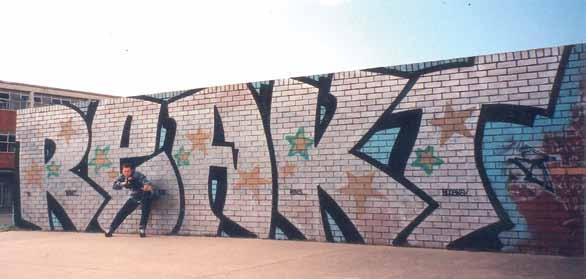





123 123



















































 Photo by ruth nije bijvank
Photo by ruth nije bijvank




























































































































































